Biology - Unit 2: Protostomes
1/103
There's no tags or description
Looks like no tags are added yet.
Name | Mastery | Learn | Test | Matching | Spaced |
|---|
No study sessions yet.
104 Terms
Porifera
Sponges
Ctenophora
Ctenophores
Cnidaria
Jellyfish, sea anemones, hydras, box jelly fish
Rotifera
Rotifer
Platyhelminthes
Flatworms
Annelida
Annelids
Mollusca
Molluscs
Nematoda
Round worms
Tardigrada
Tardigrades; water bears
Onychophora
Velvet worms
Arthropoda
Arthropods
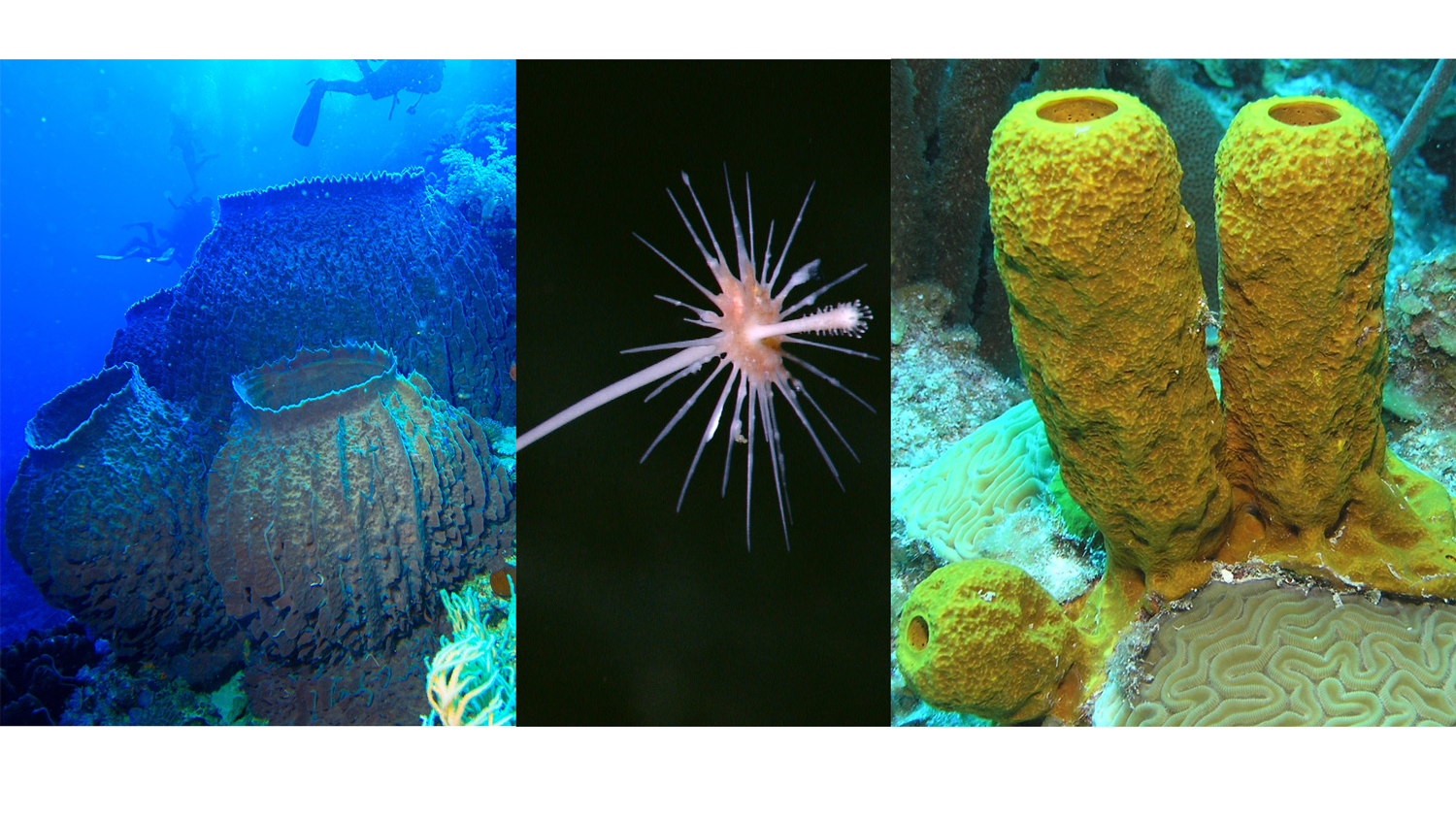
Who am I?
Demospongiae

Who am I?
Hexactinellida

Choanocytes
Line the interior of sponges
Contain a central flagellum, or cilium, surrounded by a collar of microvilli
Make up the choanoderm

Amebocyte
Motile cells found in sponges; have varied functions
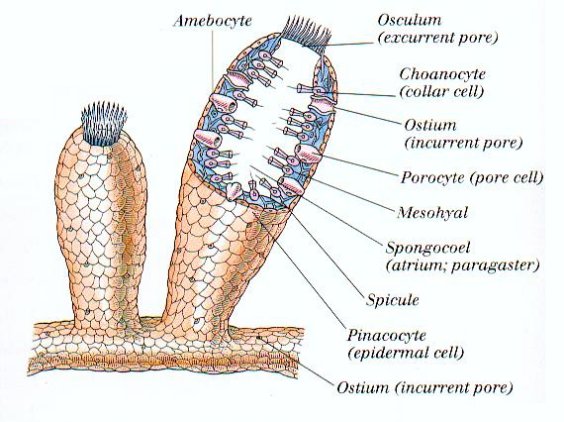
Ostium
Pores on the body that allow water to enter the sponge
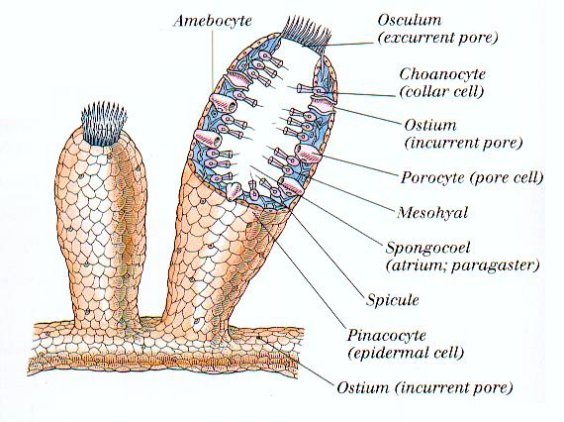
Mesohyl
Gelatinous matrix within a sponge
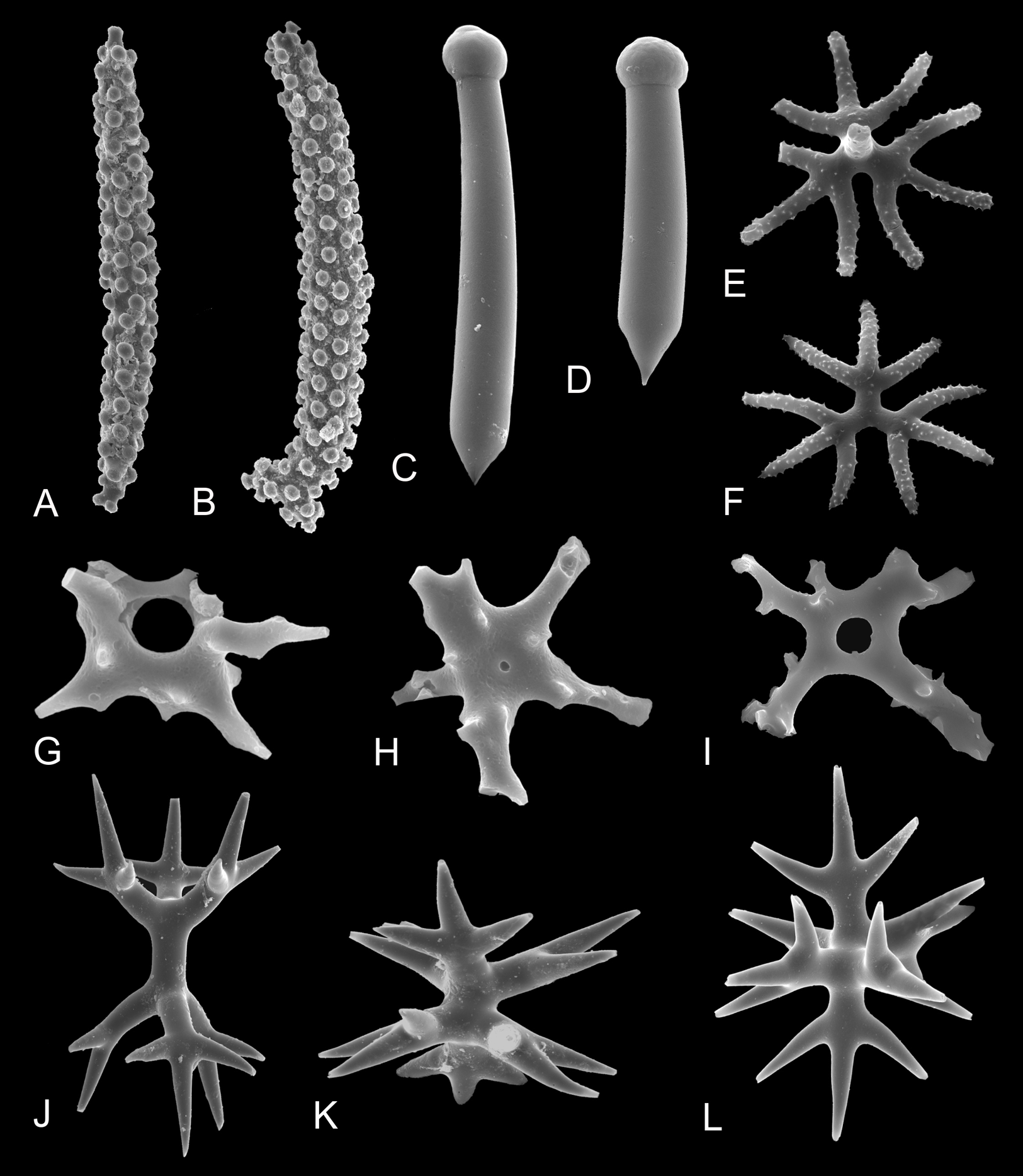
Spicule
Stiff spike of silica or calcium carbonate that provides structural support in the body of many sponges
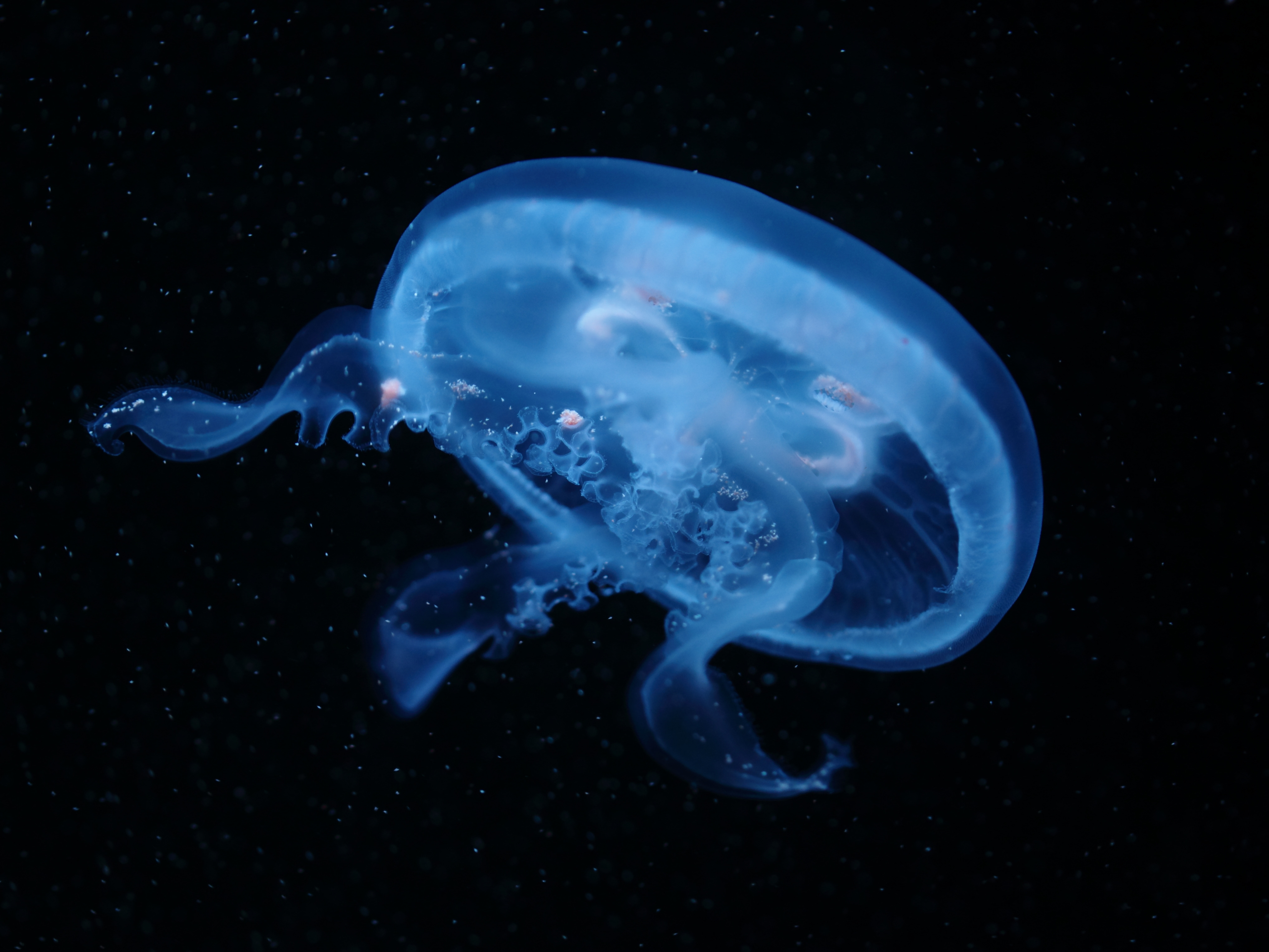
What am I?
Scyphozoa

What am I?
Hydrozoa

What am I?
Anthozoa
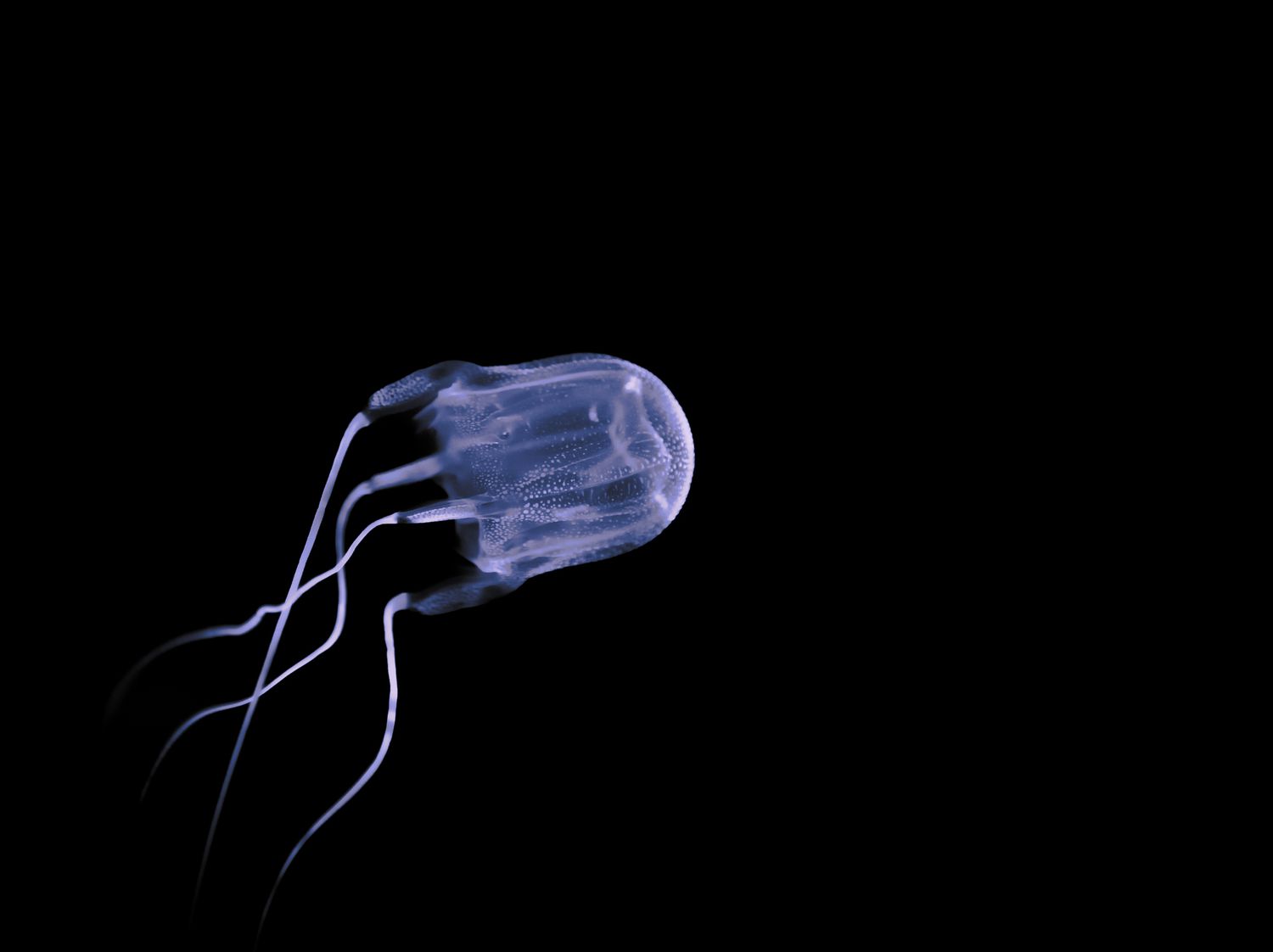
What am I?
Cubozoa

Nematocyst
Barbed Organelle
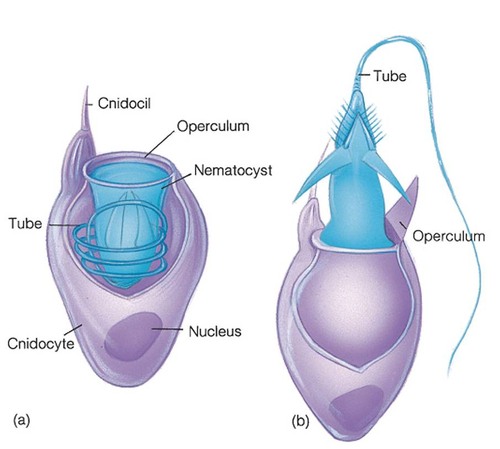
Cnidocyte
Stinging cell
Hydrazoa (Class)
Hydrazoans, siphonophores; polyp dominates
Scyphozoa (Class)
True jellyfish; medusa dominates
Cubozoa (Class)
Box jellies; medusa dominates
Anthozoa (Class)
Sea anemones, corals, sea pens; only polyp
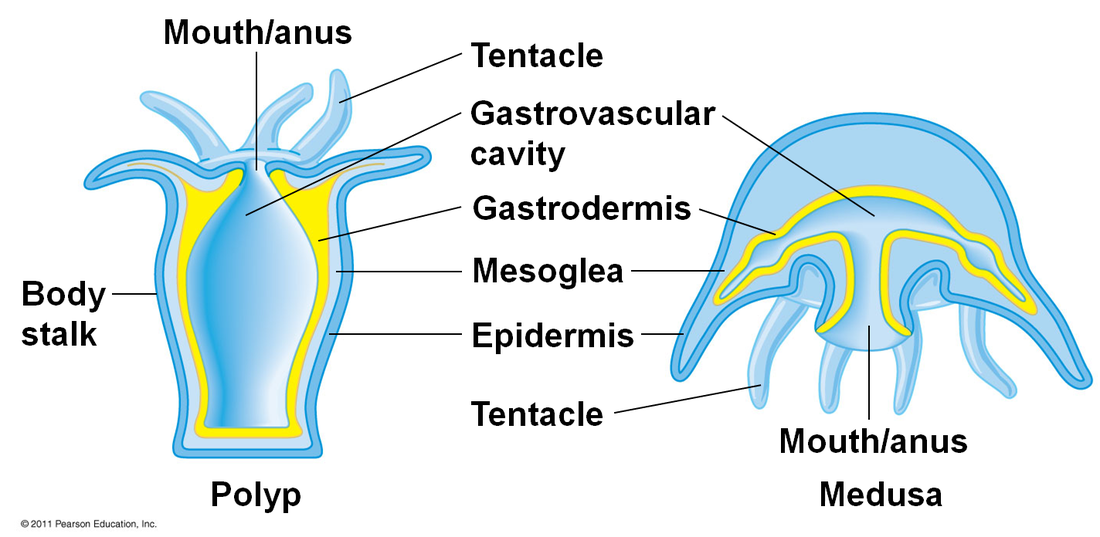
Medusa
The free-floating stage in the life cycle of some cnidarians
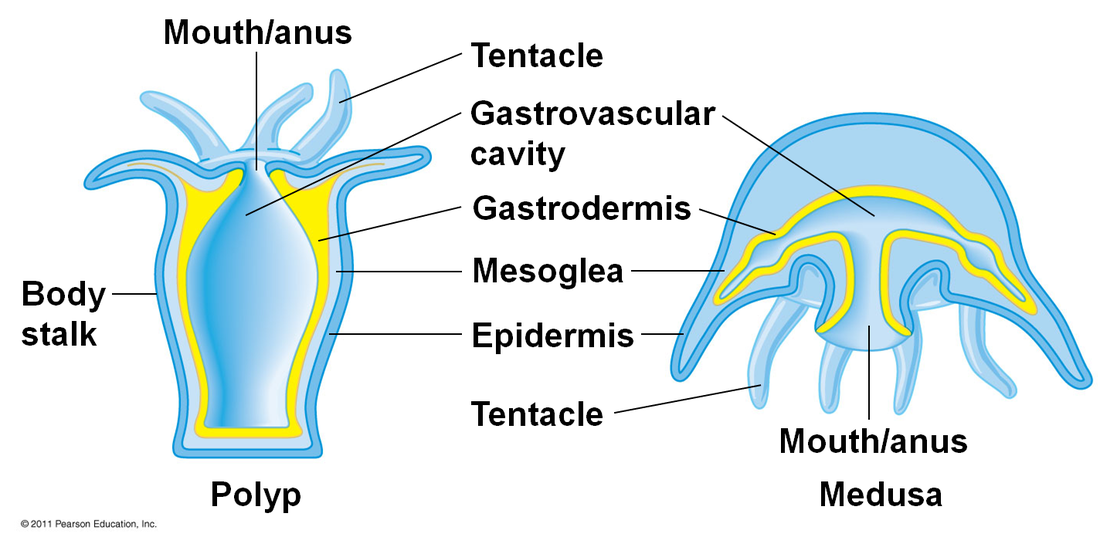
Polyp
The immotile (sessile) stage in the life cycle of some cnidarians
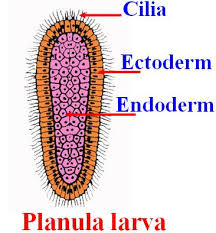
Cilia
Filamentous projections; used to move the cell as well as to circulate fluid or particles around the surface of a stationary cell
Lophotrochozoans (Lineage)
Protostomes that grow by extending their skeletons; have a lophophore and/or trochophore
Ecdysozoans (Lineage)
Protostomes that grow by shedding their exoskeleton or cuticle
Trochophore
ciliated larvae
Lophophore
specialized feeding structure
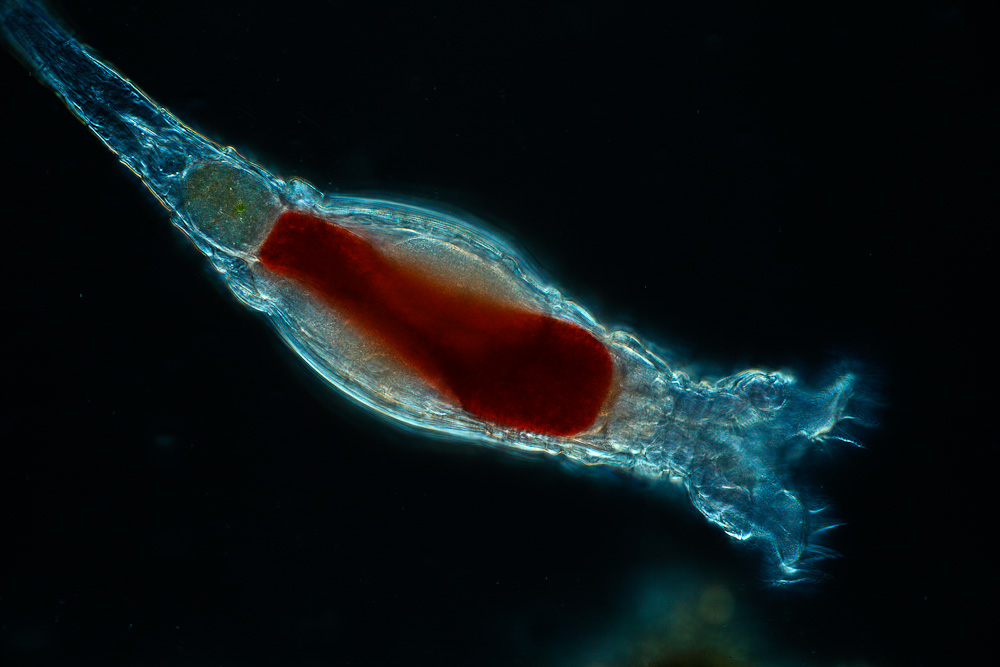
What am I?
Rotifera (Phylum)
Corona
Ring of cilia around the mouth

What am I?
Turbellaria/Planaria
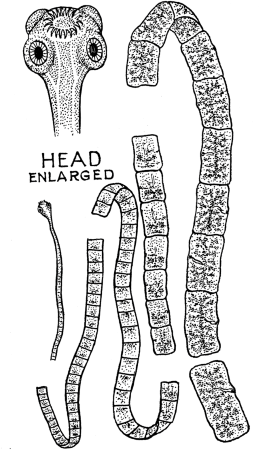
What am I?
Cestoda/Tapeworm
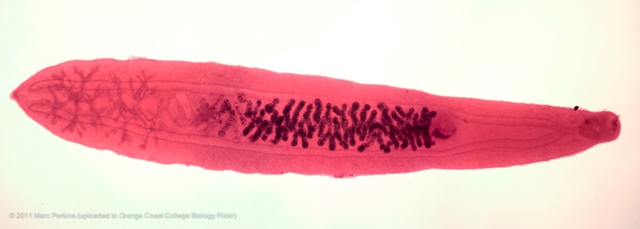
What am I?
Trematoda/Fluke
Turbellaria: Parasitic?
No
Cestoda: Parasitic?
Yes
Trematoda: Parasitic?
Yes?
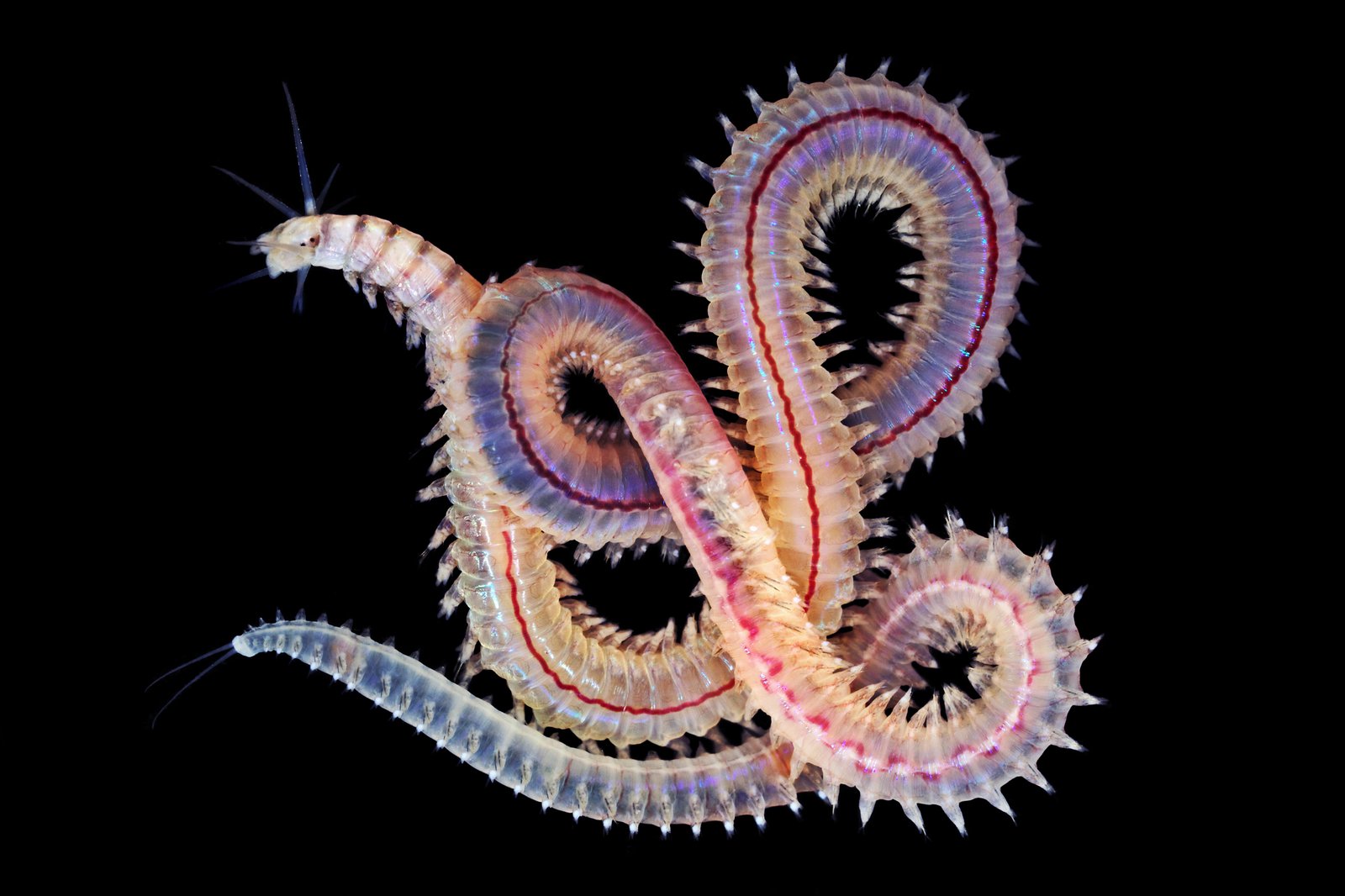
What am I?
Polychaetes/Marine worm
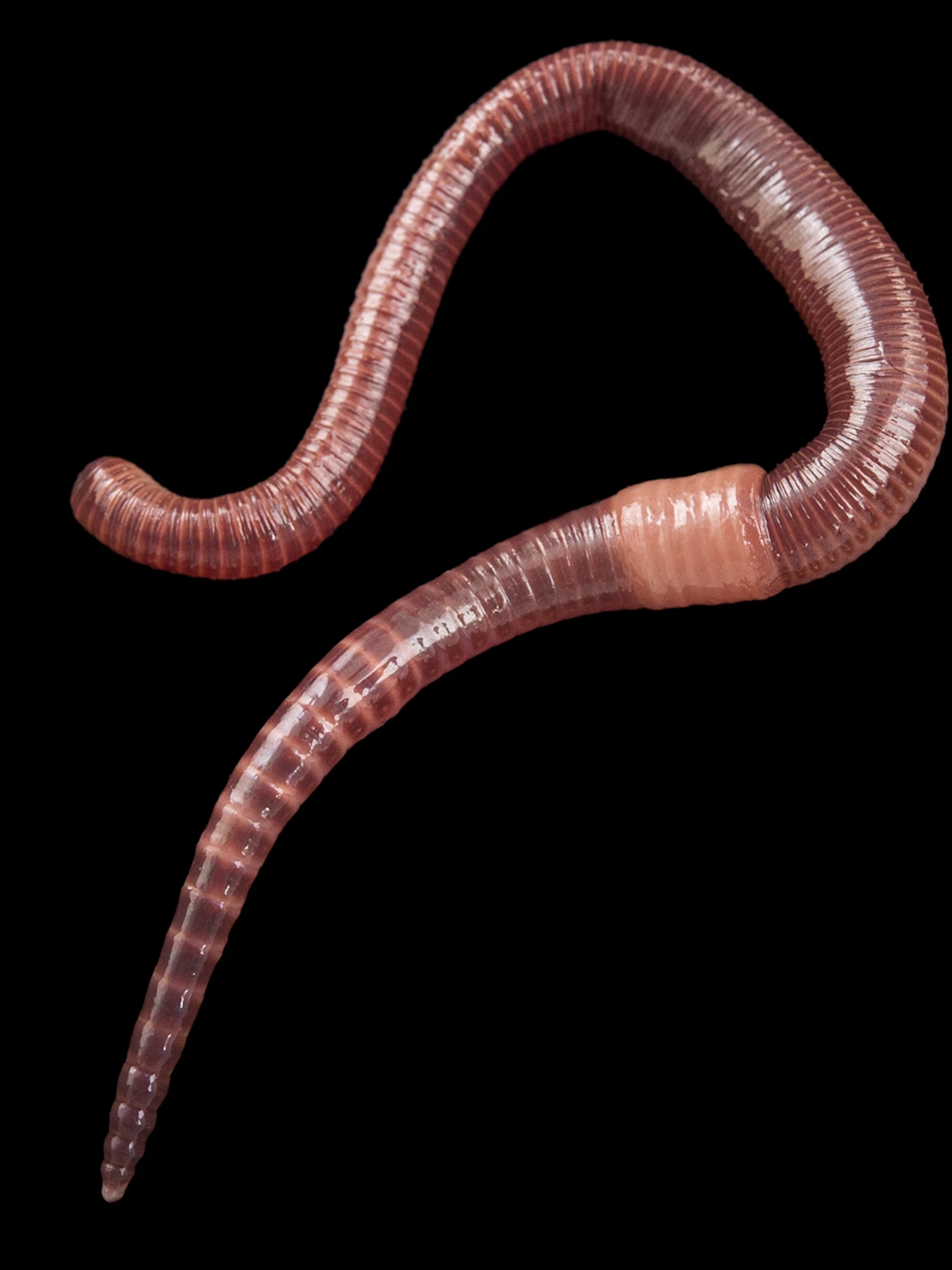
What am I?
Oligochaetes/Earth worm
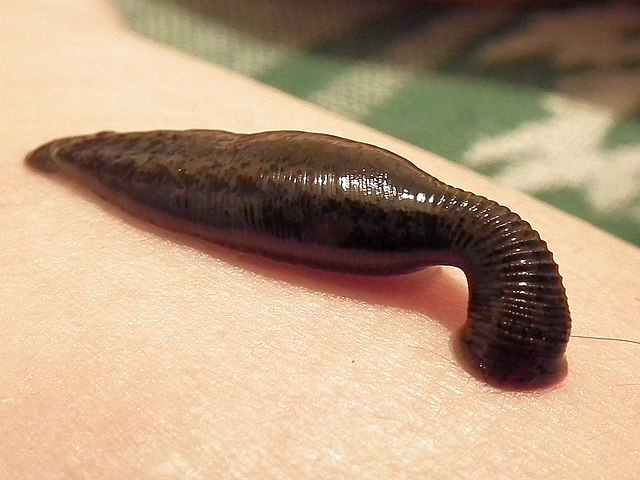
What am I?
Hirudinea/Leech
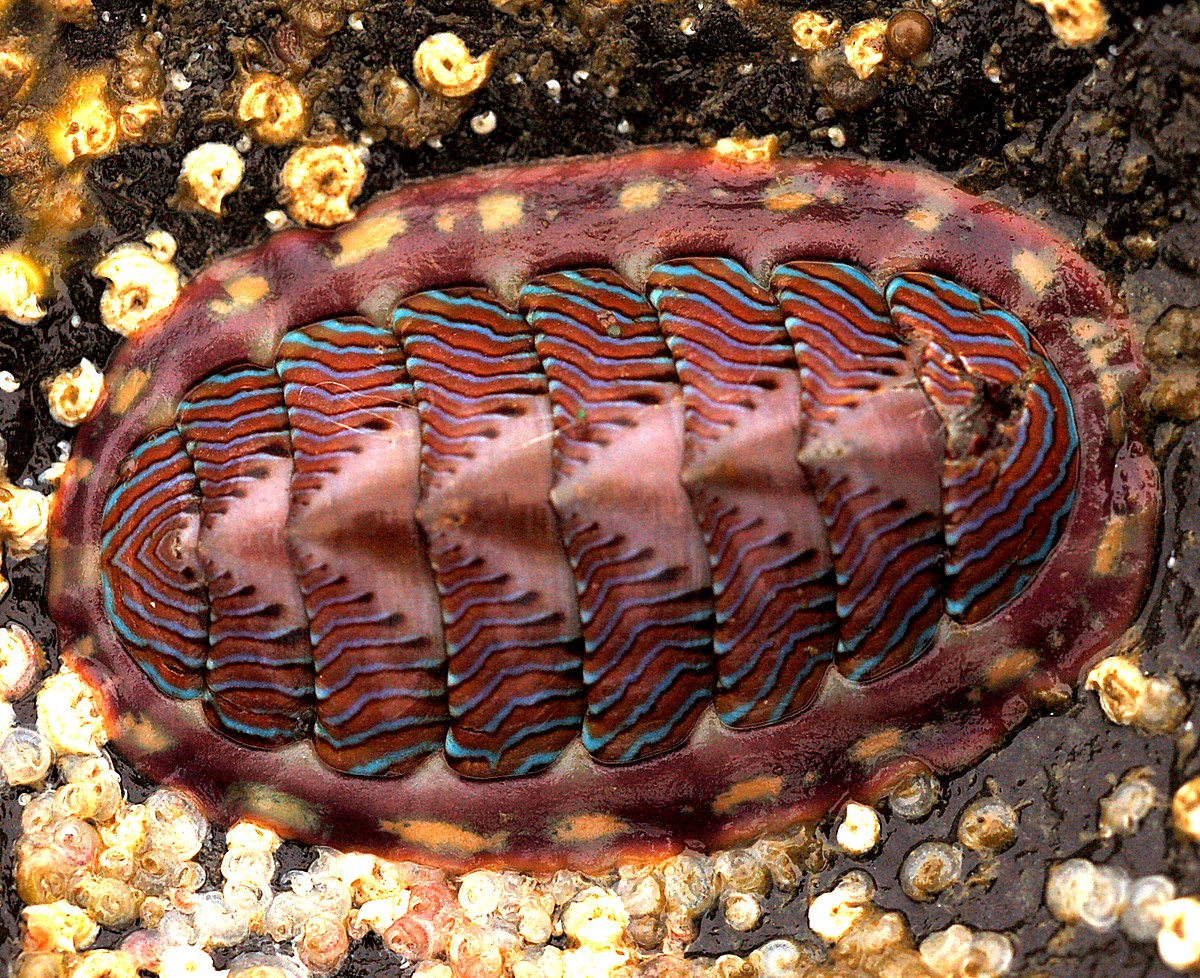
What am I?
Polyplacophora/Chiton
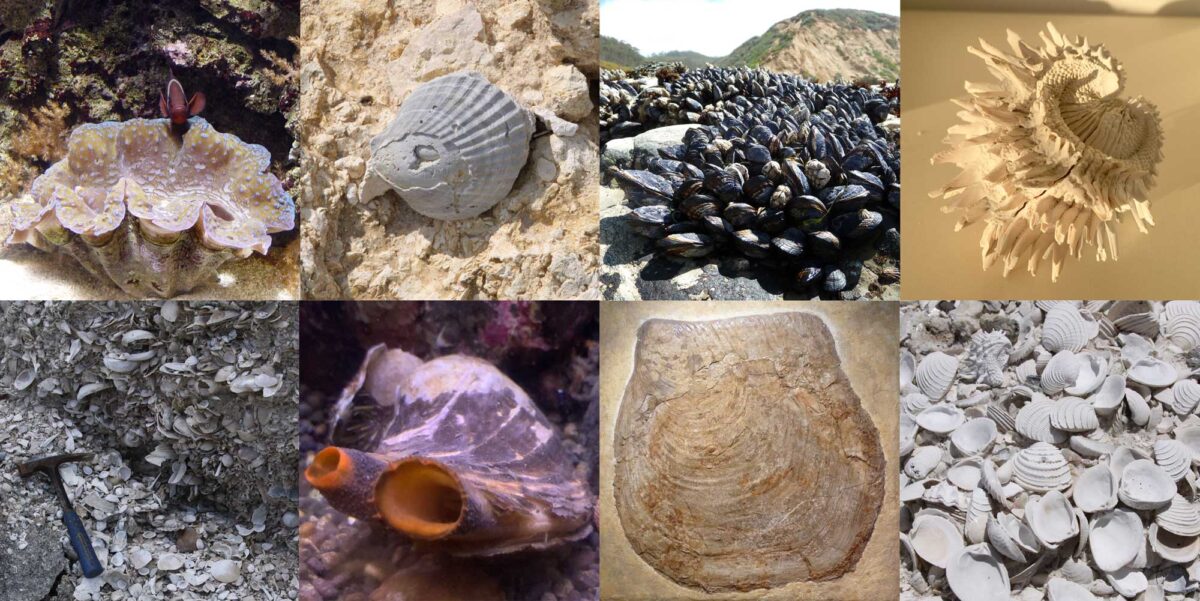
What am I?
Bivalvia/Bivalves
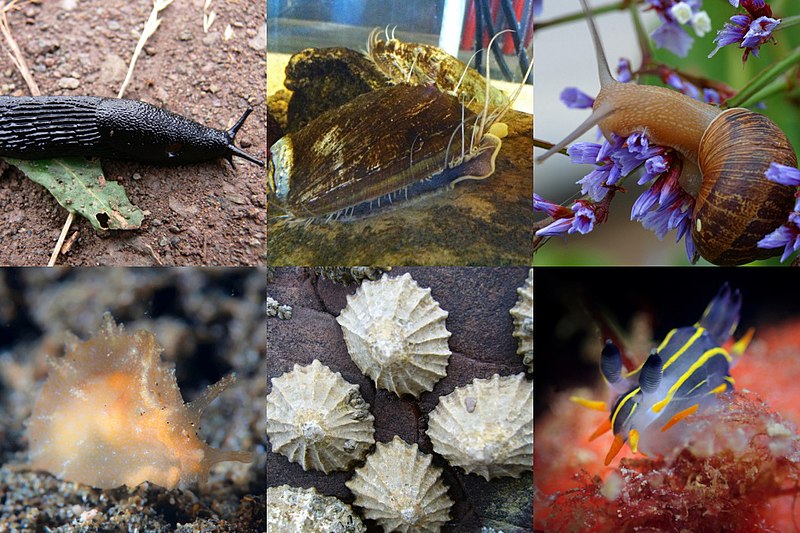
What am I?
Gastropoda/Snails & slugs
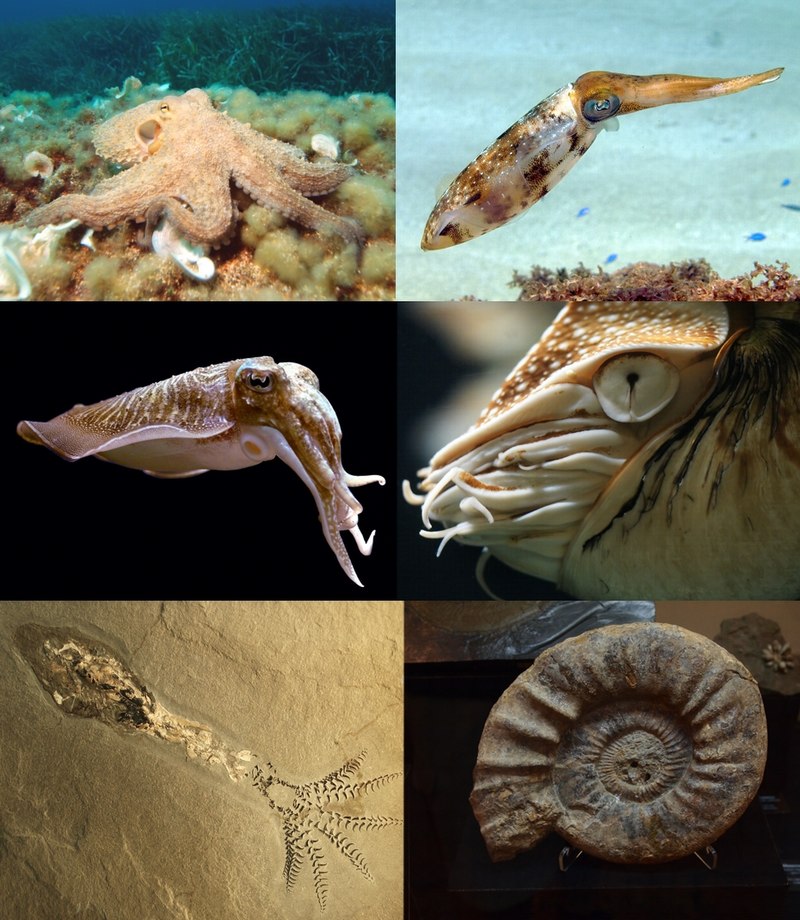
What am I?
Cephalopoda/Octopus, squid, nautiluses & cuttlefish
Polyplacophora: Radula?
Yes
Bivalvia: Radula?
No
Gastropoda: Radula?
Yes
Cephalopoda: Radula?
Yes
Scolex
Head of a tapeworm that has hooks, suckers, or both
Proglottid
Segment of a tapeworm
Foot
Of a mollusc: a muscular appendage, used for movements such as crawling and/or burrowing into sediment
Mantle
Of a mollusc: the thick outer tissue that protects the visceral mass and may secrete a calcium carbonate shell
Visceral mass
Of a mollusc: contains most of the internal organs and external gill
Chaetae
Bristle-like extensions found in some annelids
Radula
A rasping feeding appendage in some molluscs
Cloaca
a body cavity into which the urinary, gastrointestinal, and reproductive tracts all empty
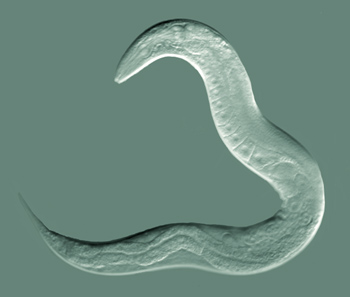
What am I?
Nematoda/Roundworm
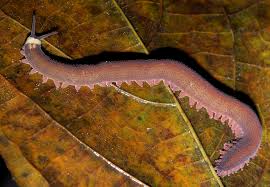
What am I?
Onychophora/Velvet worm
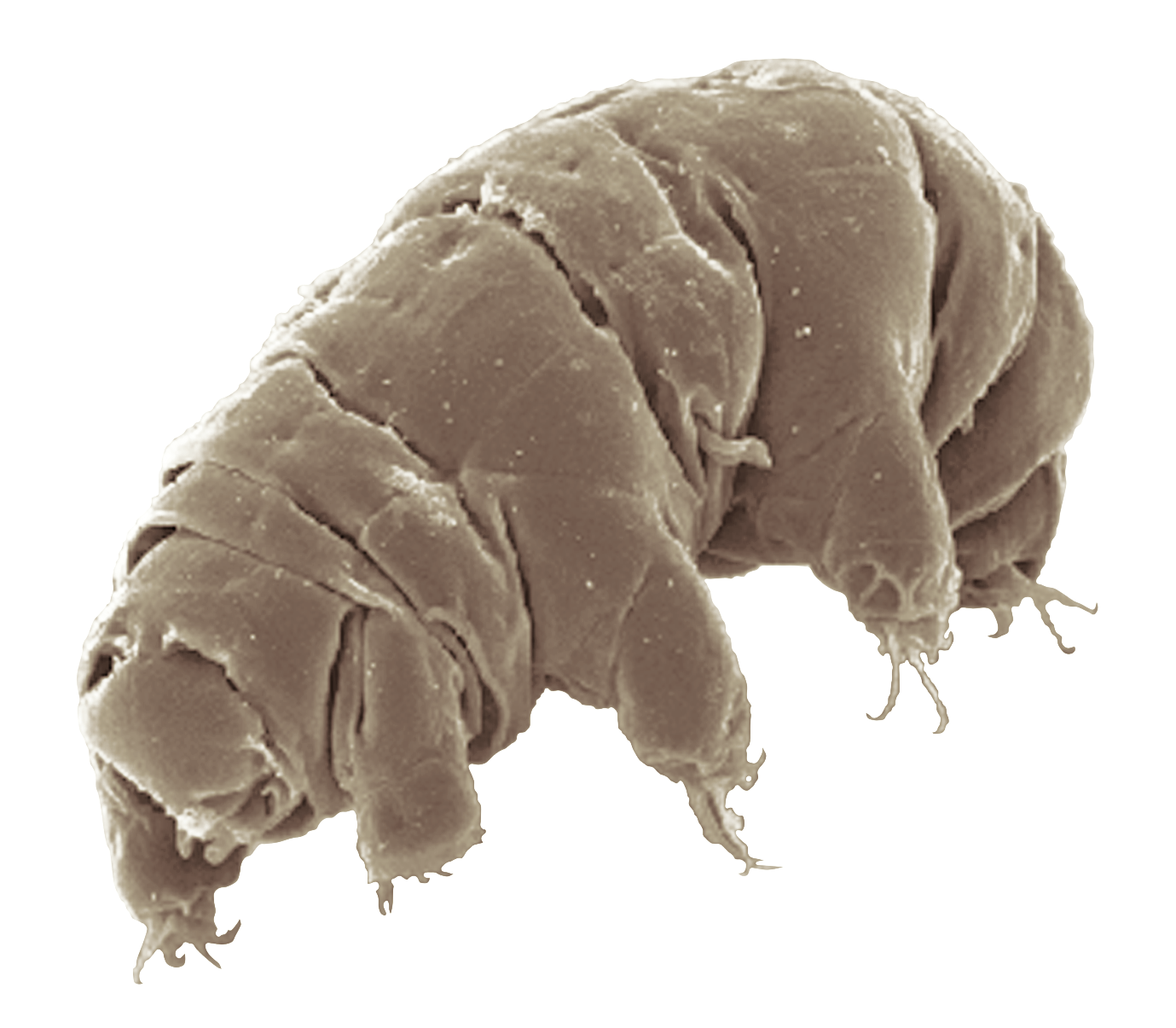
What am I?
Tardigrada/Water bears
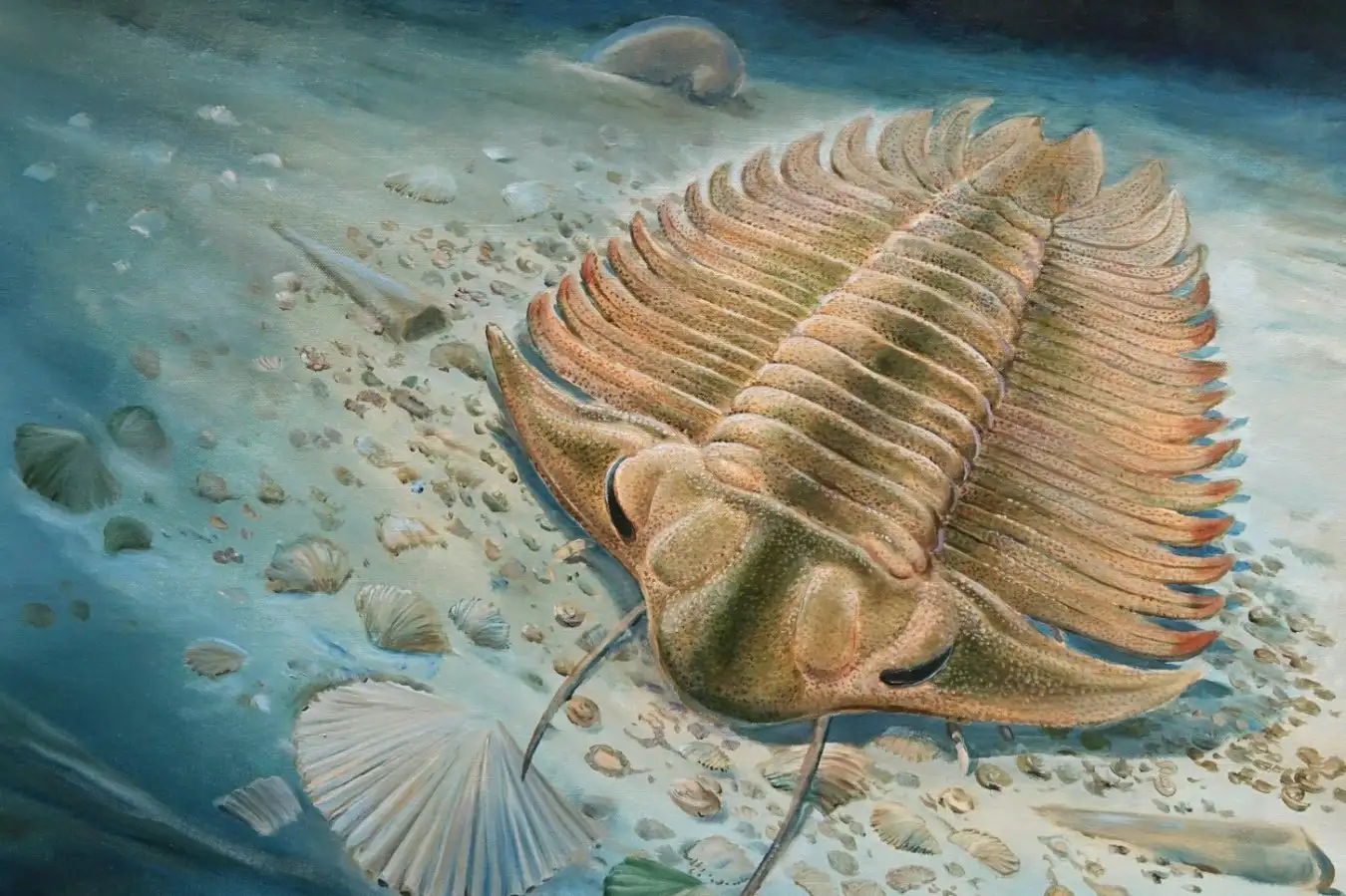
What am I?
Trilobite

What am I?
Diplopoda/Millipede
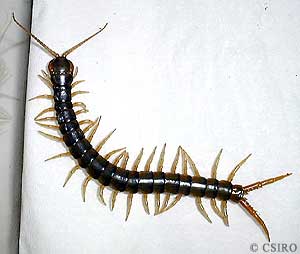
What am I?
Chilopoda/Centipede
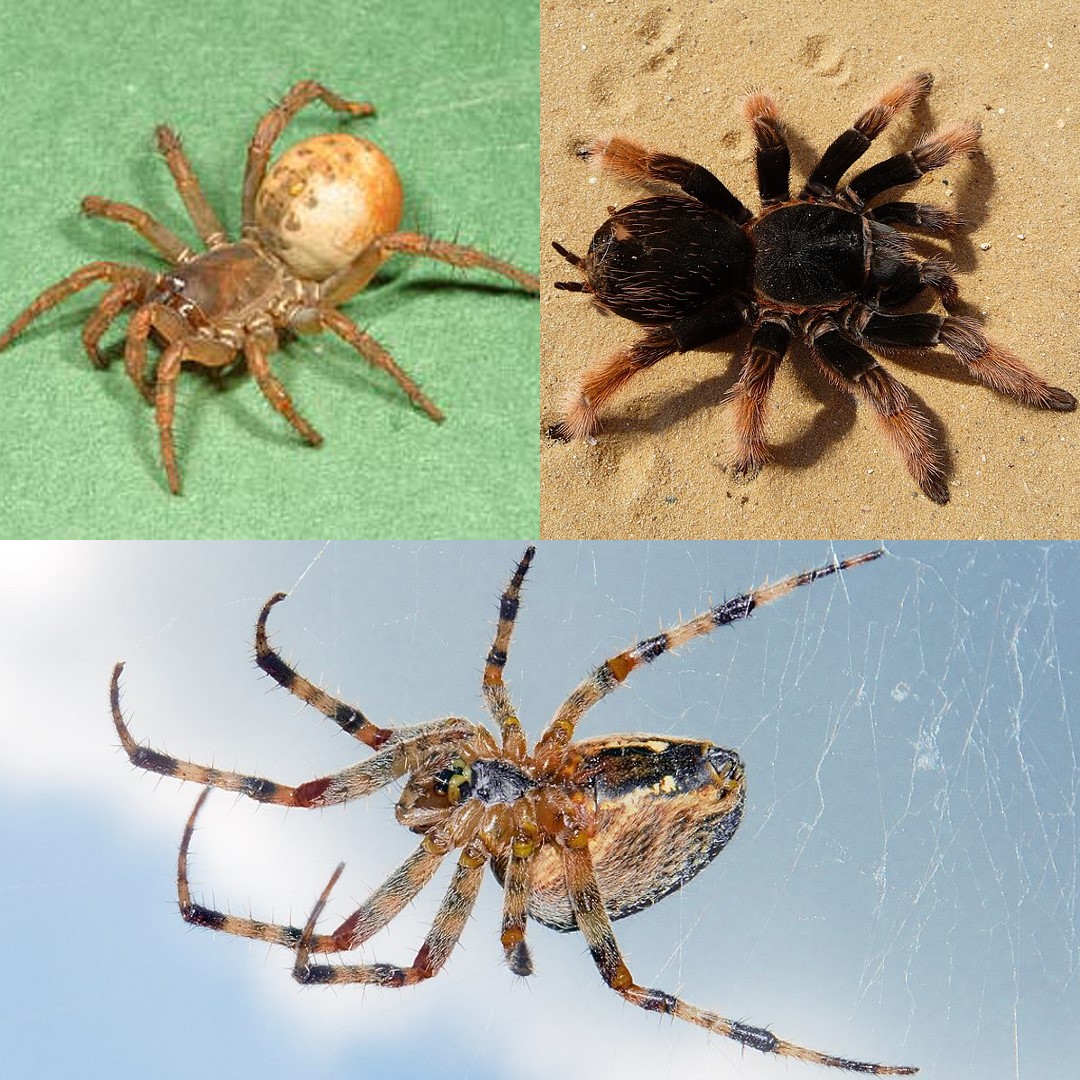
What am I?
Araeneae/Spider
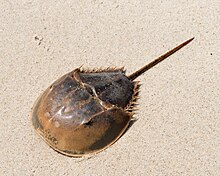
What am I?
Xiposura/Horseshoe crab
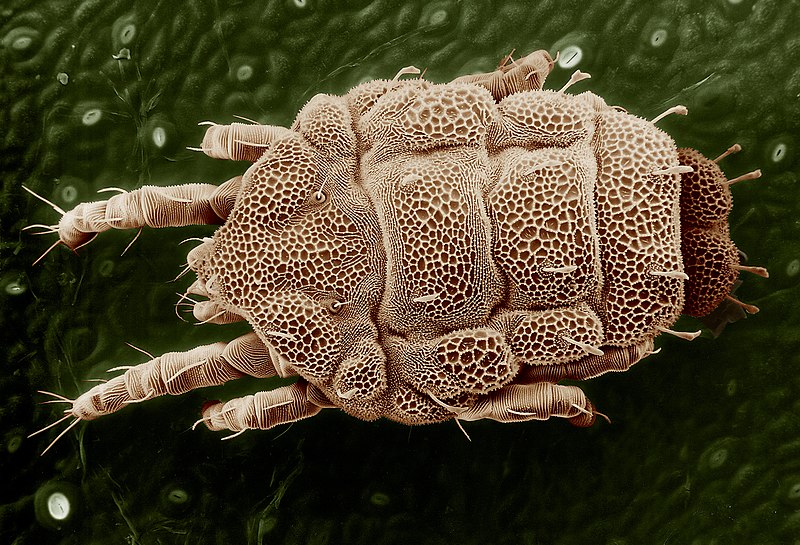
What am I?
Acari/Ticks & mites

What am I?
Scropion
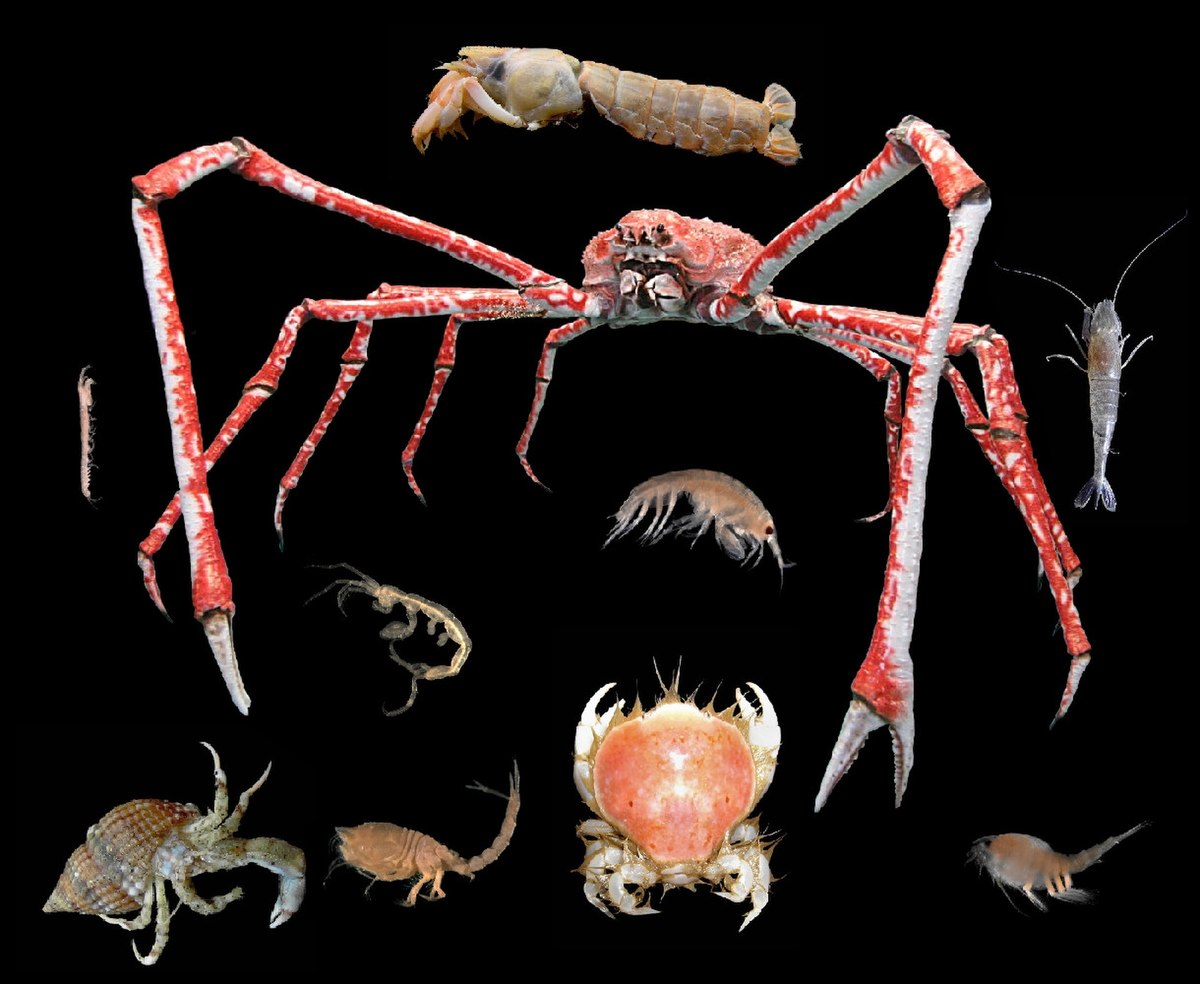
What am I?
Malacostraca/Crabs & lobsters

What am I?
Branchiopoda/Brine shrimp
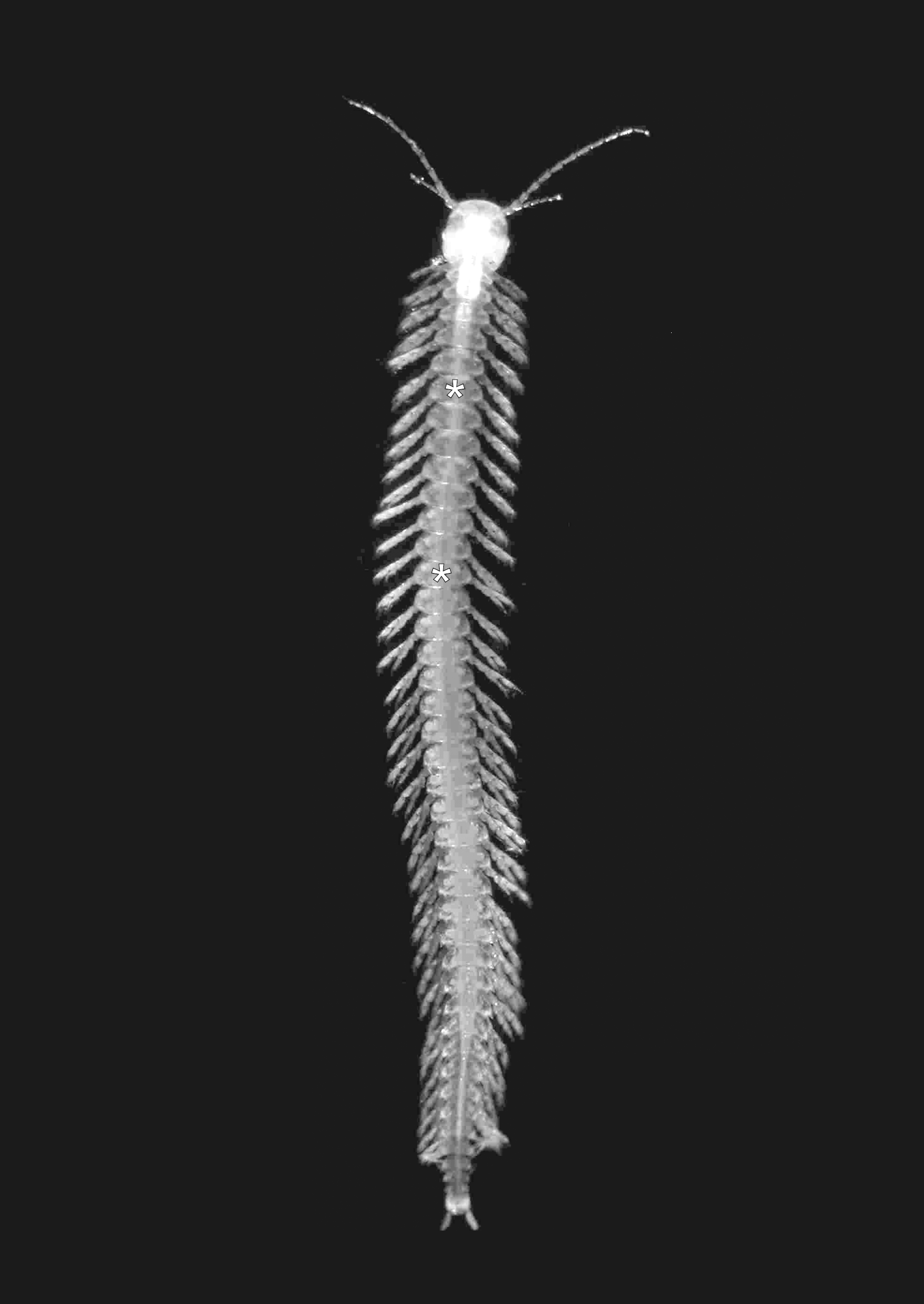
What am I?
Remipedia
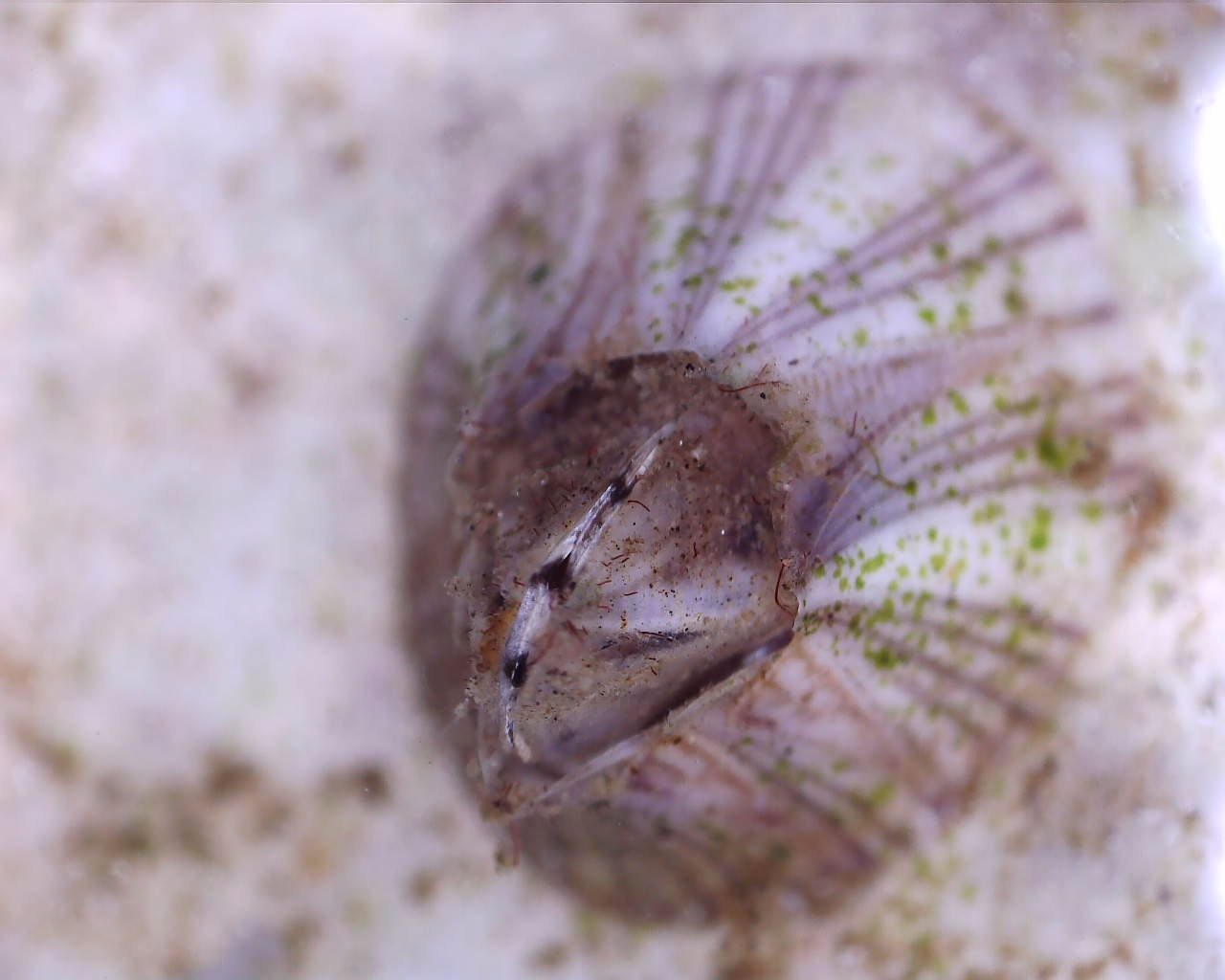
What am I?
Maxillopoda/Barnacle

A
Antenna
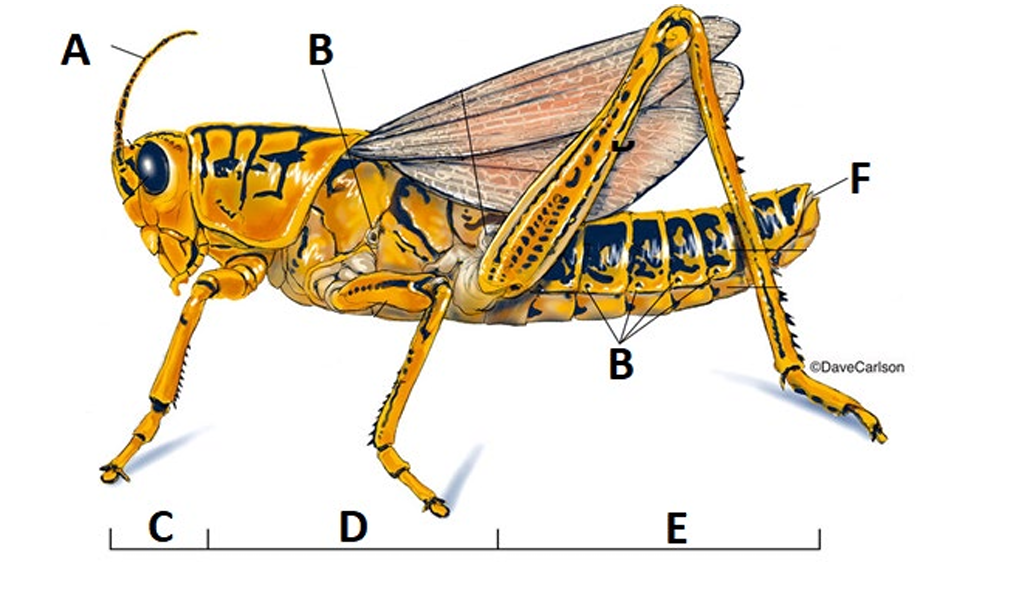
B
Spiracle
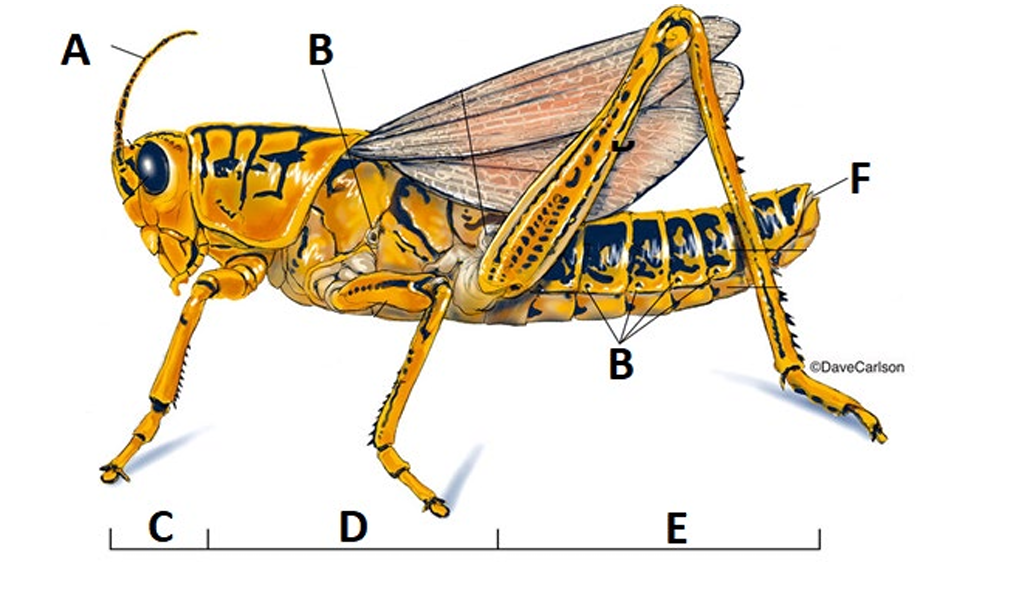
C
Head
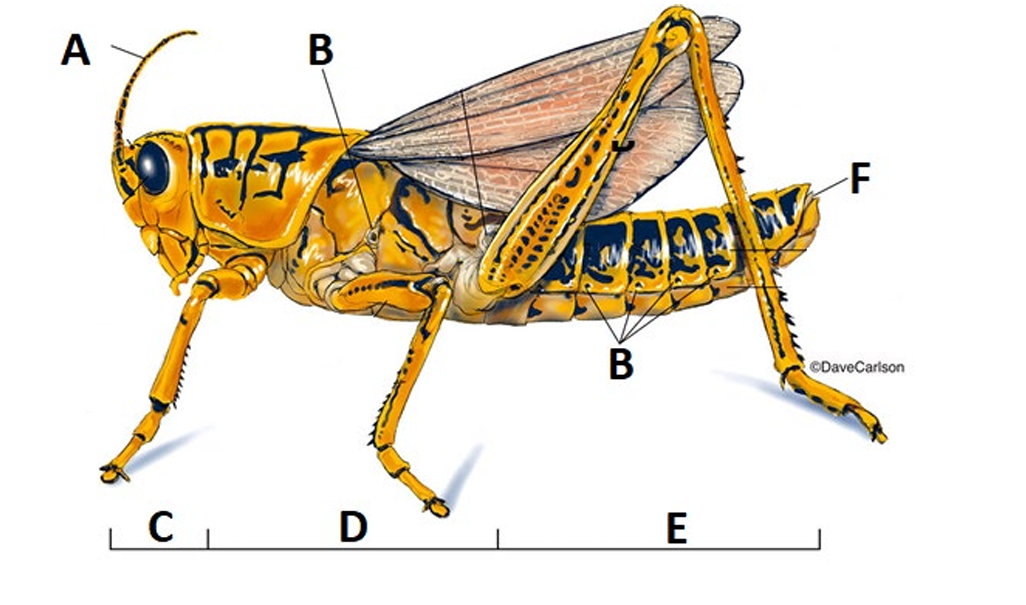
D
Thorax
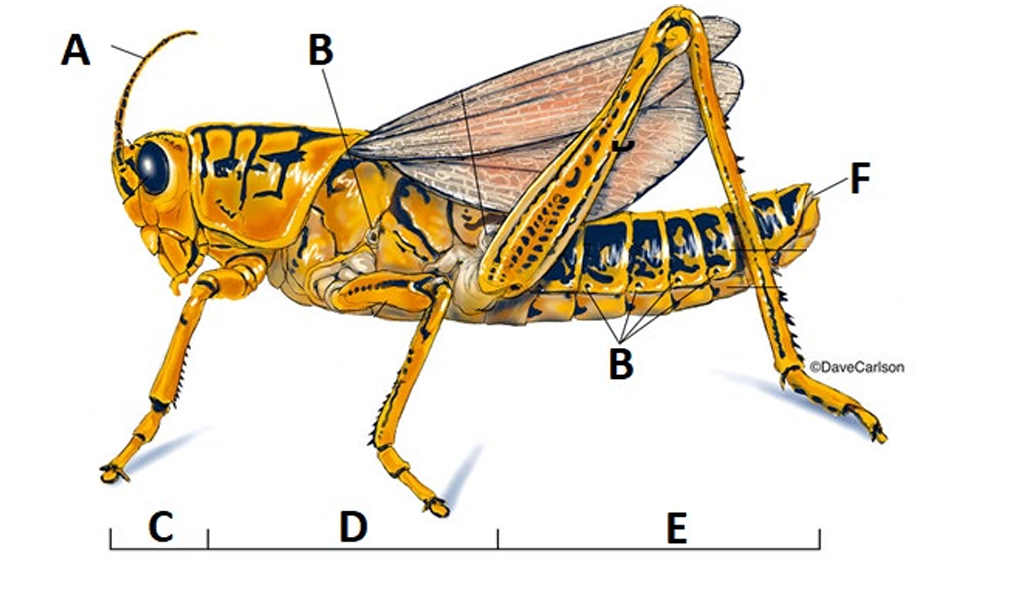
E
Abdomen
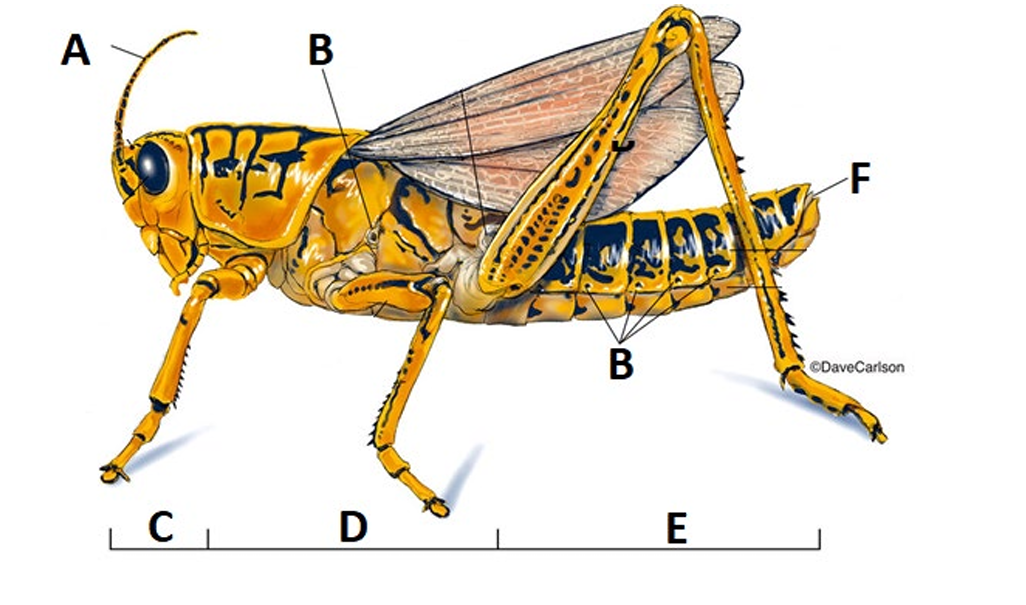
F
Ovipositor
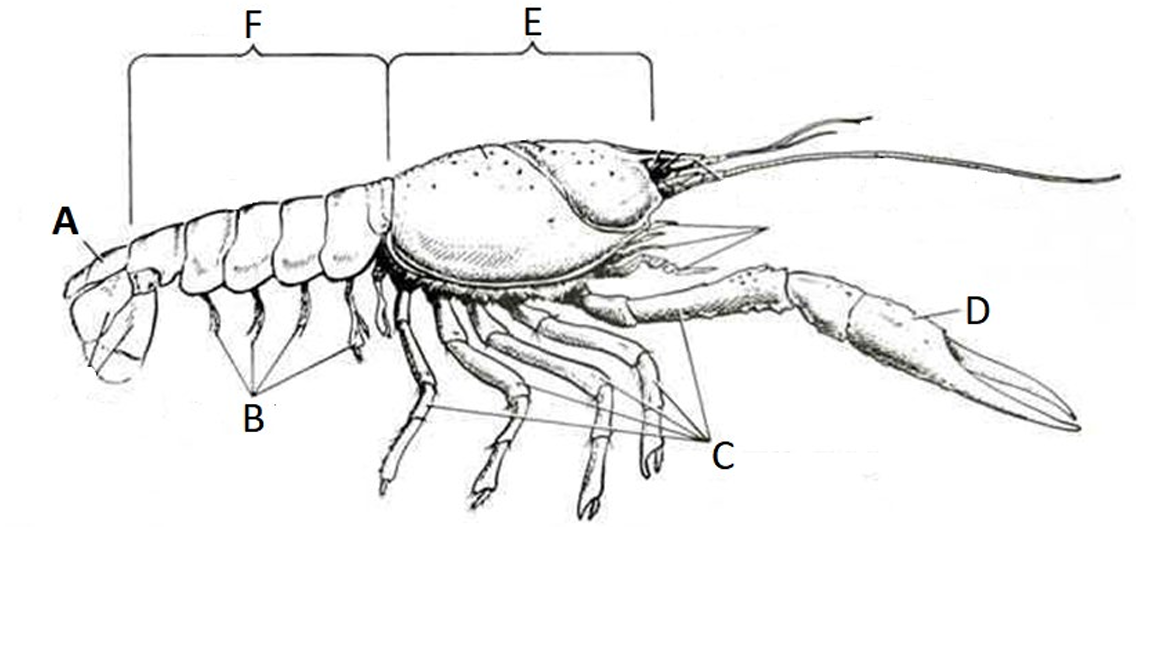
A
Telson
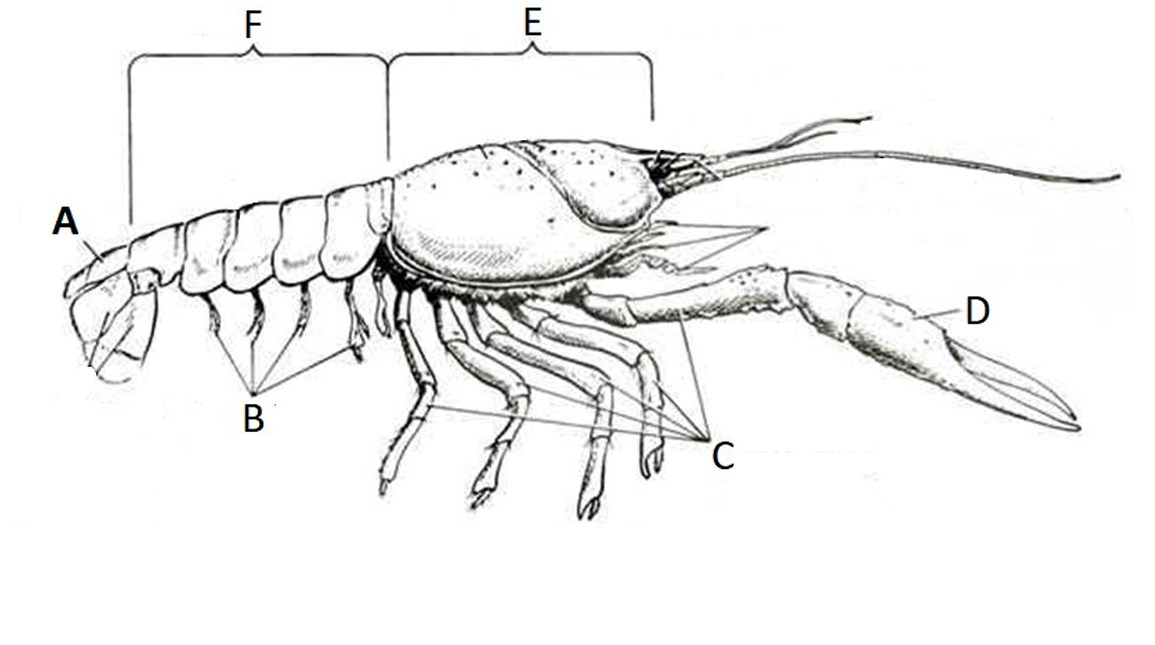
B
Swimmerets
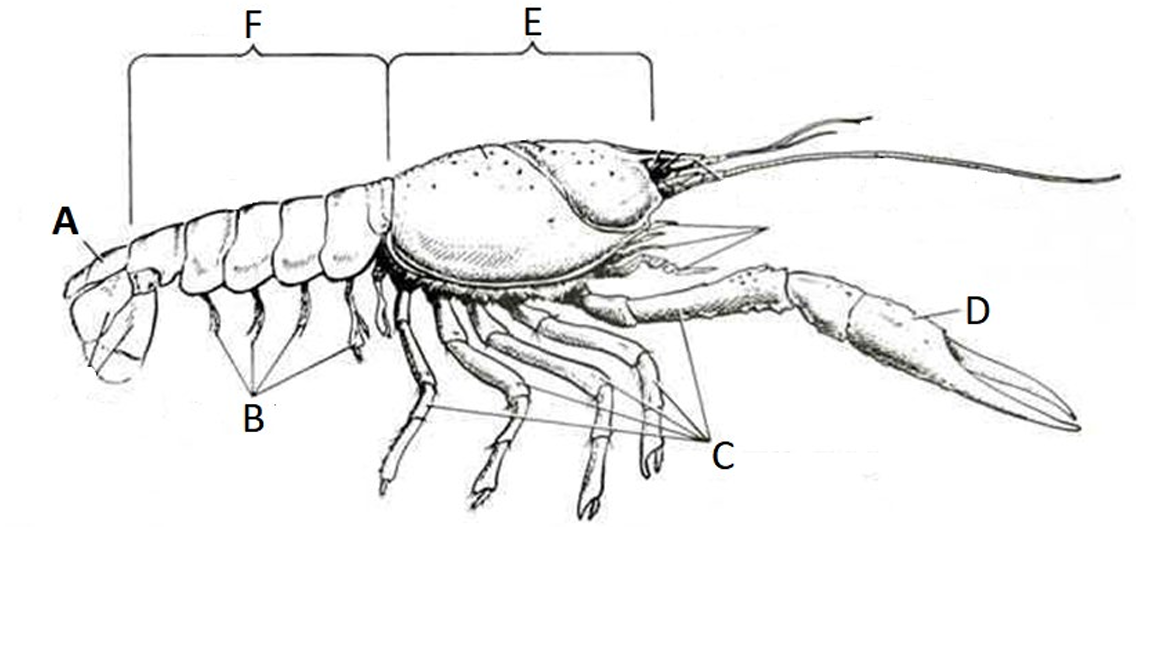
C
Walking legs

D
Cheliped
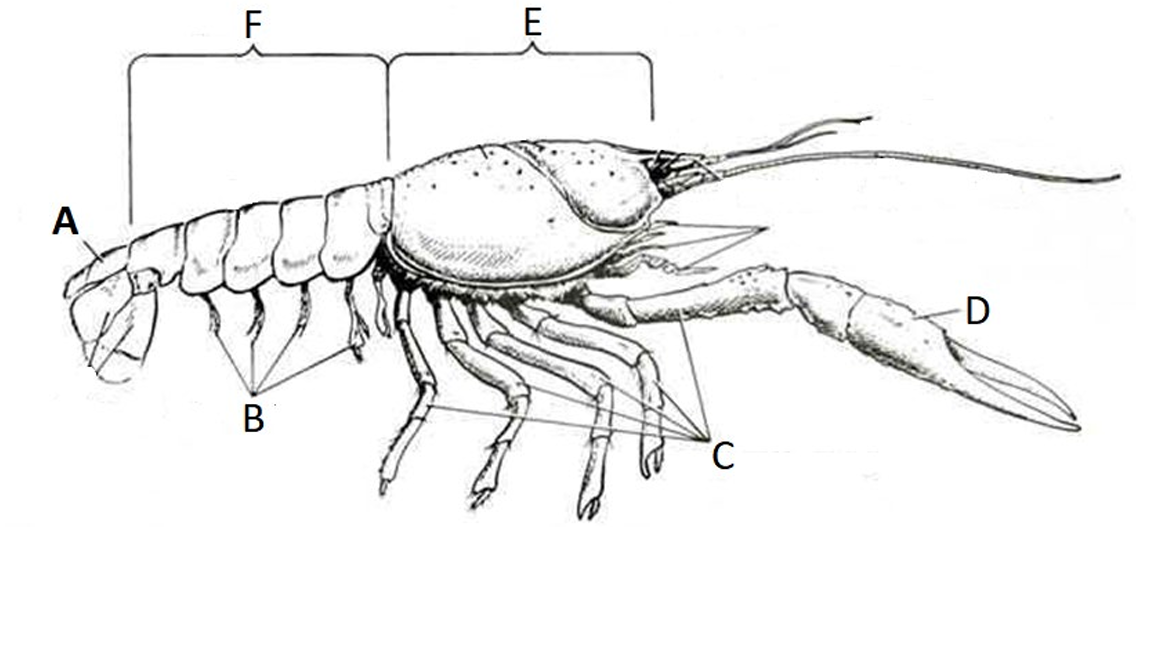
E
Cephalothorax
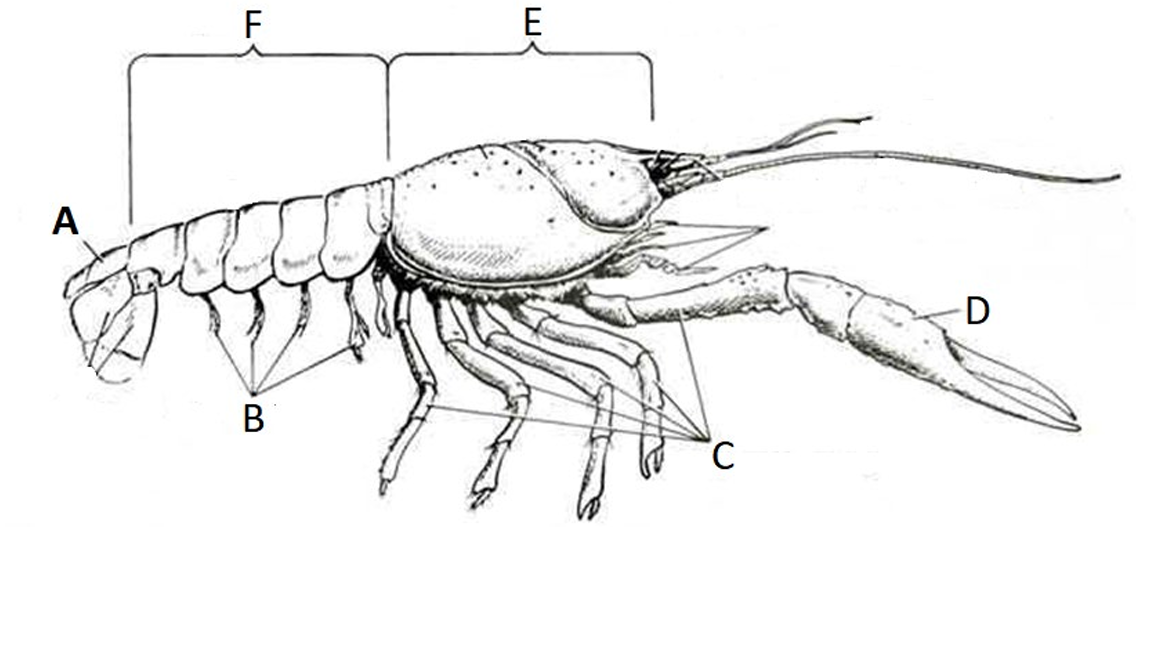
F
Abdomen
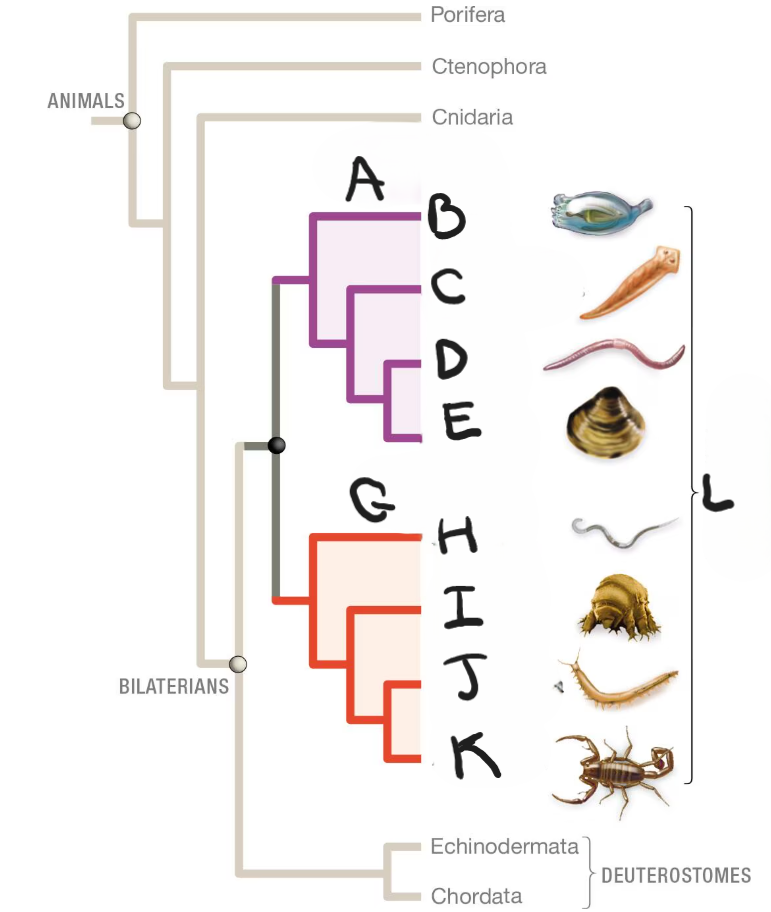
A
Lophotrochozoa
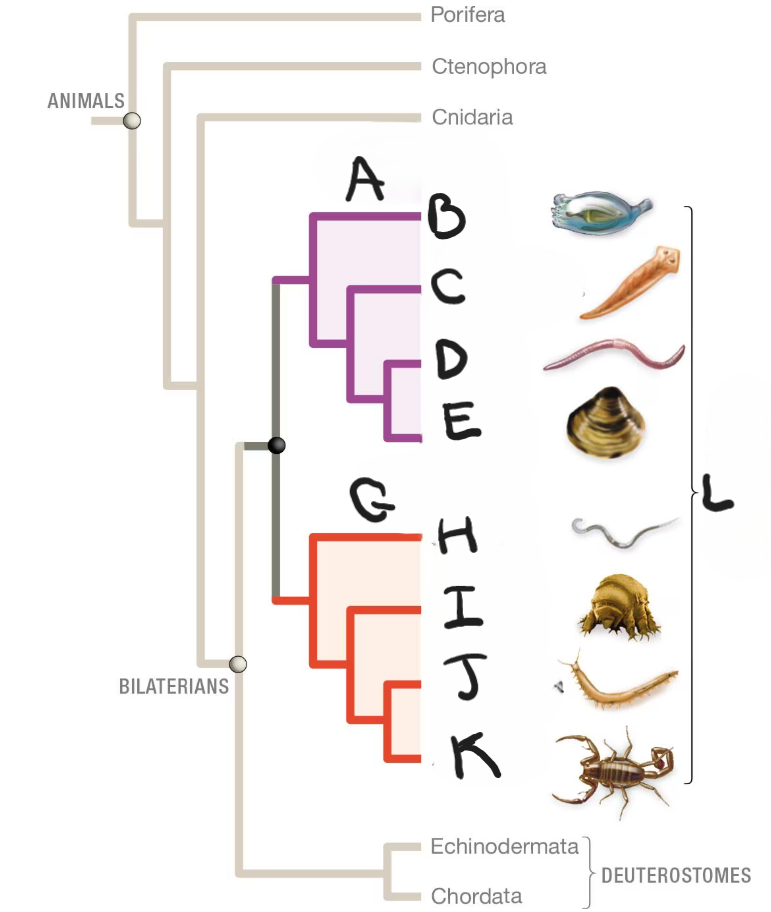
B
Rotifera
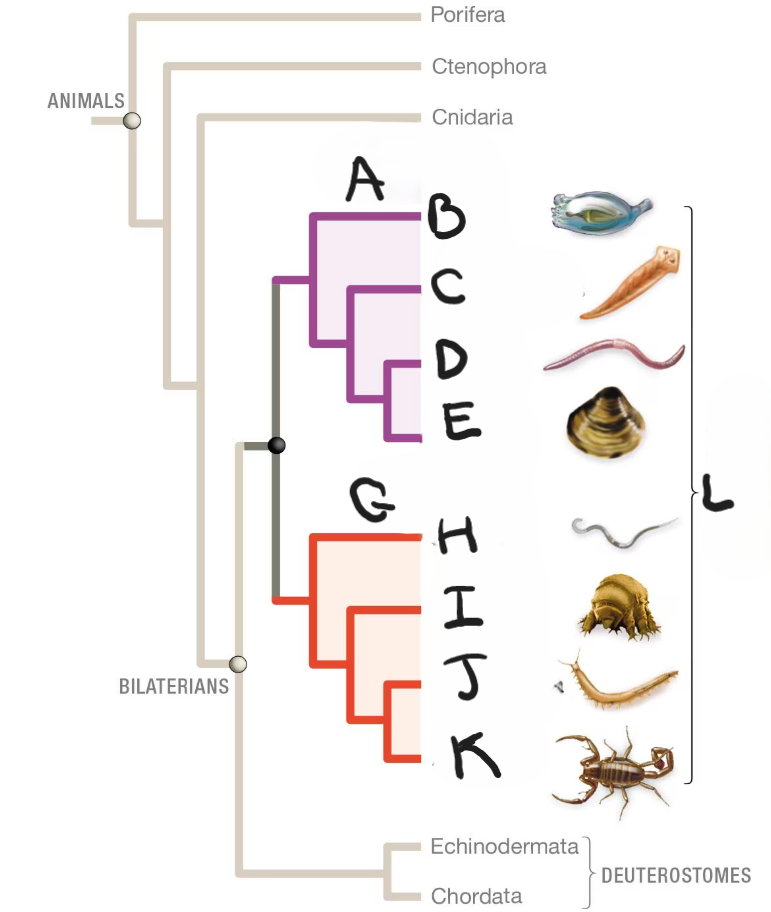
C
Platyhelminthes
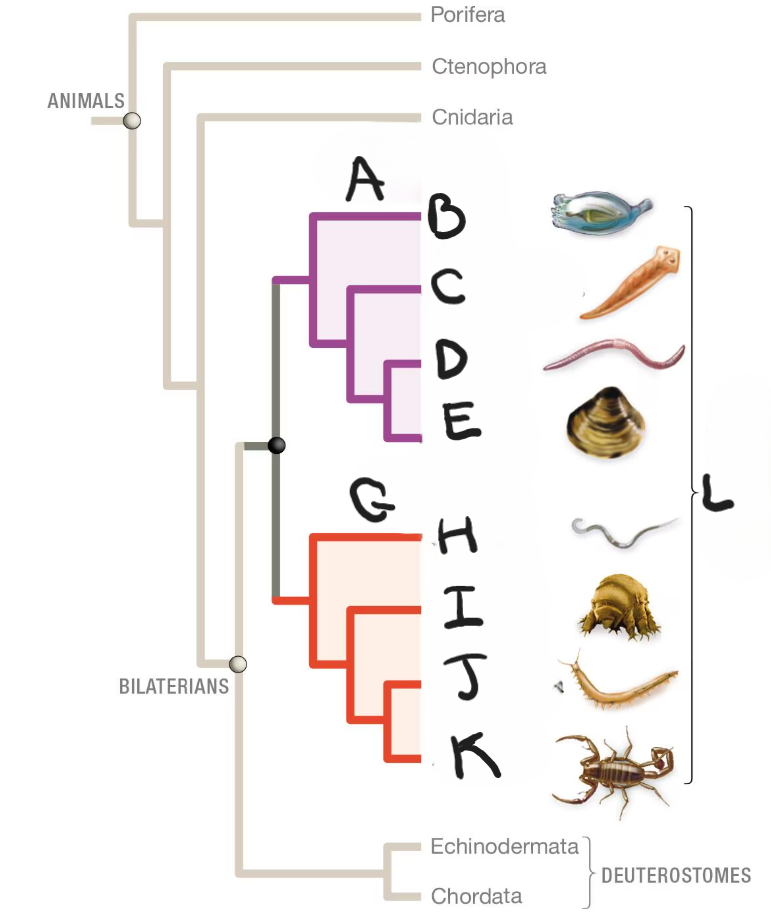
D
Annelida
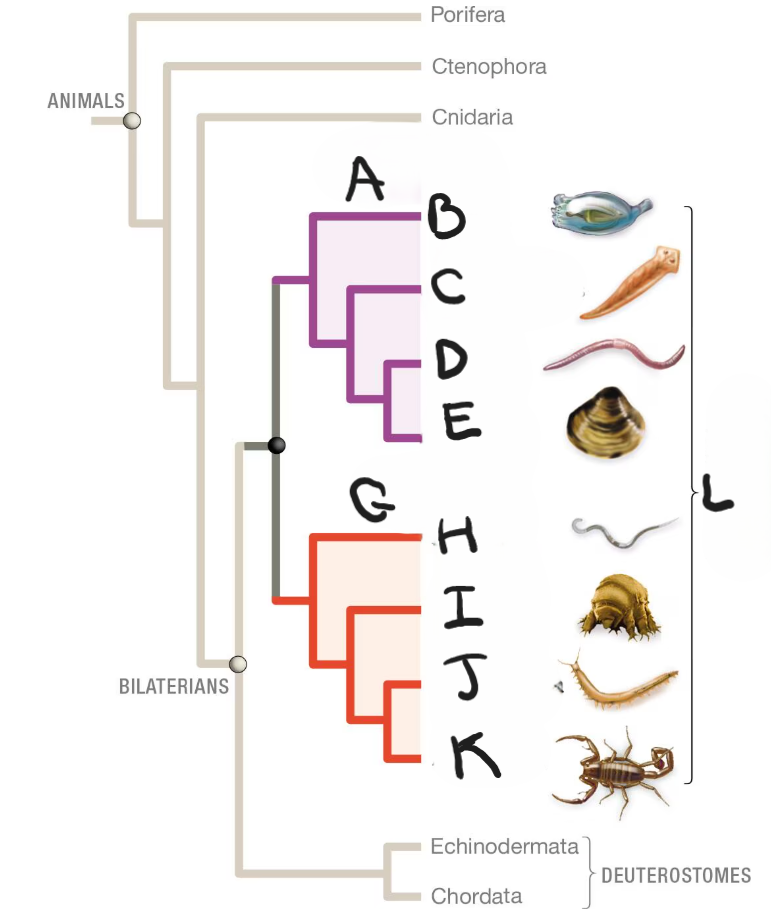
E
Mollusca

G
Ecdysozoa

H
Nematoda
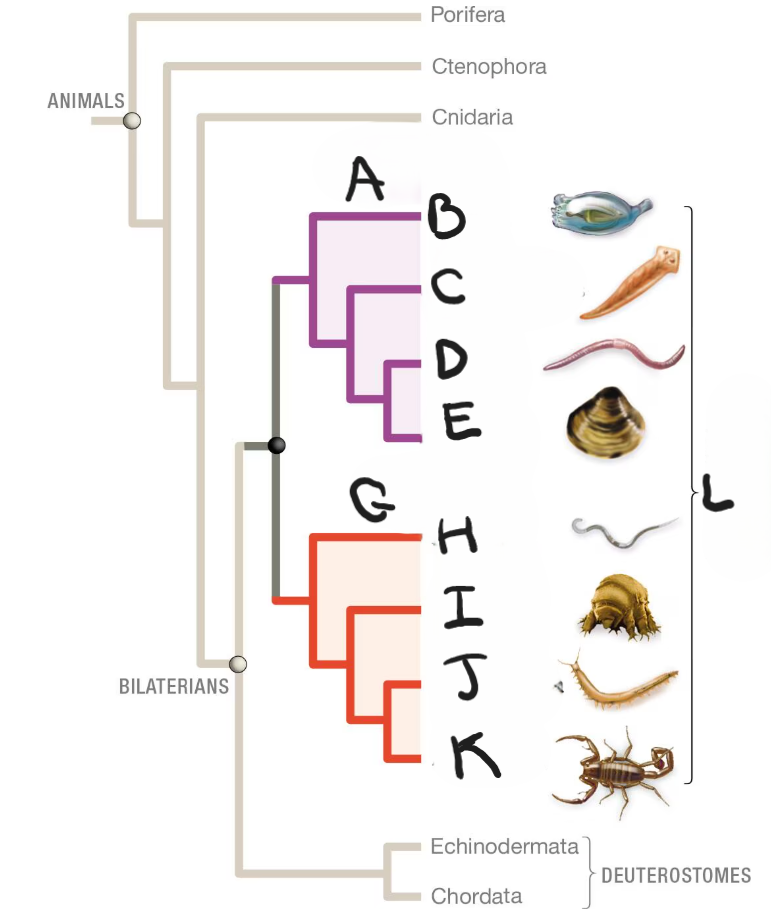
I
Tardigrada
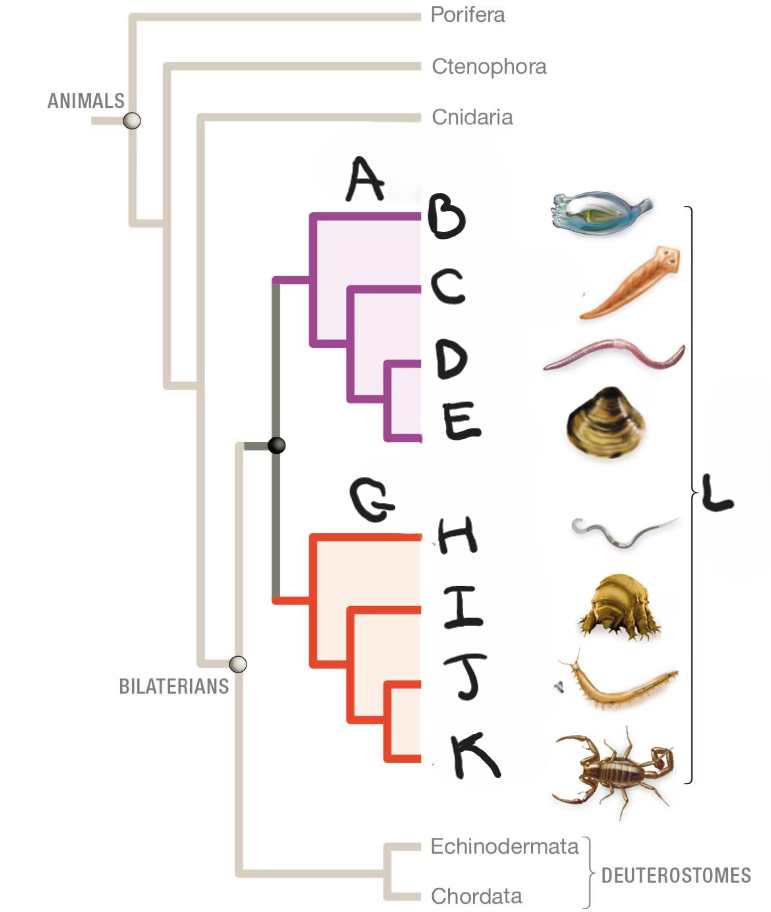
J
Onychophora
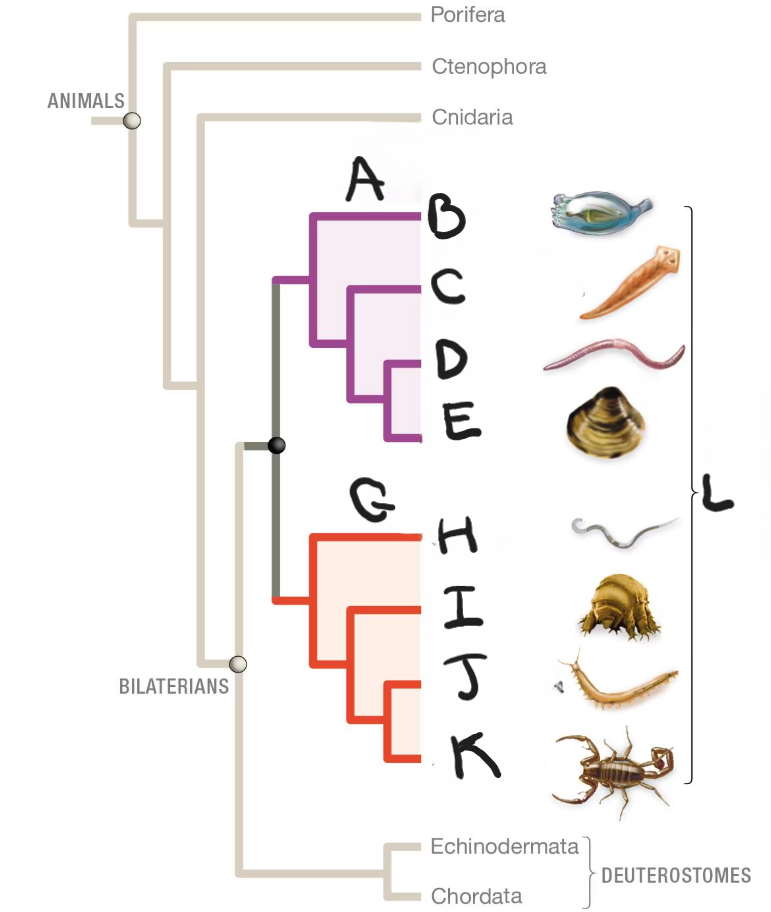
K
Arthropoda
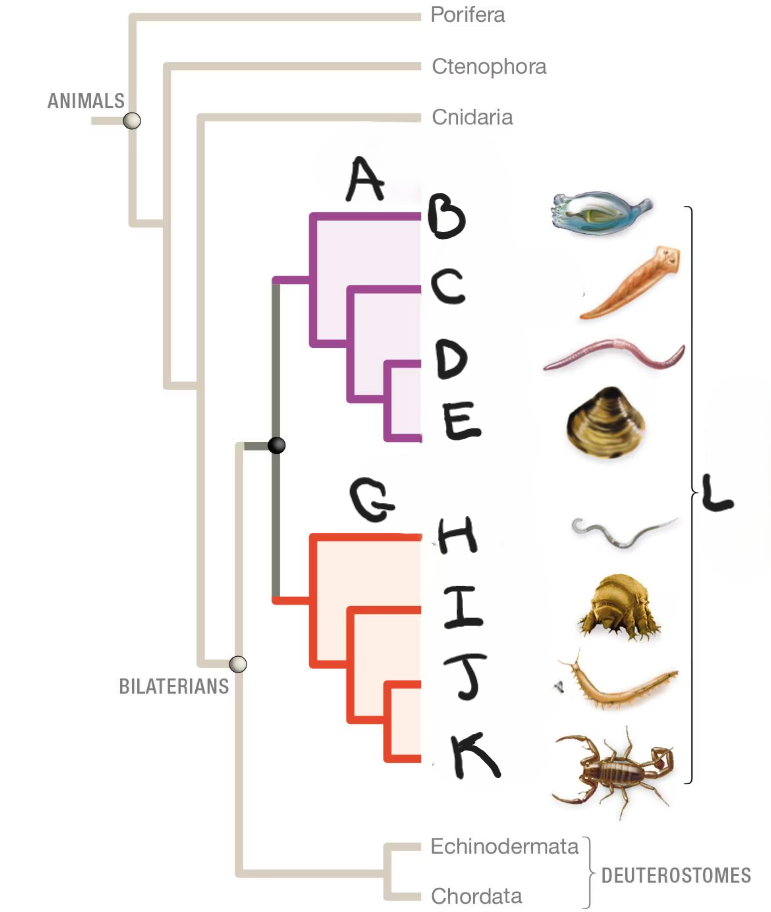
L
Protostomes
Tagmata
Prominent body regions in arthropods